

Visiting Marae in New Zealand: Immersing Yourself in Māori Culture and Traditions
Table of contents.

Understanding Etiquette When Visiting Marae in New Zealand
To understand Marae in New Zealand, dive into the meaning and significance behind these sacred sites and their evolution over time. Explore the historical context and cultural traditions that have shaped the practice of visiting Marae. Gain insight into the deep cultural significance of this tradition by examining both the historical and present-day roles that these sites play in New Zealand society.
Meaning and significance of Marae
Marae is much more than just a physical structure . It’s a symbol of Māori identity and their connection to their ancestors. Marae is the place for traditional rituals, such as welcoming guests, paying respects to the dead, and making decisions. It’s the heart of any Māori village or community.
Within Marae lies the meeting house. It showcases spiritual values and architectural skills of Māori. Carvings inside tell ancestral stories while also indicating tribe and lineage. Every detail is symbolic, making the structure an important part of Maori heritage .
Marae serves as a connector between New Zealand’s past and present by preserving indigenous traditions that date back thousands of years. It keeps traditions alive such as kapa haka dance performances and sports competitions between different Māori groups.
According to www.nzhistory.govt.nz , there are approximately eight hundred Marae scattered throughout New Zealand. To appreciate Māori culture, it’s essential to understand Marae and its contribution to the country’s history. From ancient gathering places to modern cultural hubs, Marae have been through many changes.
History and evolution of Marae
Marae , a cornerstone of Maori culture, dates back to the first Polynesian settlers in New Zealand. It was used for spiritual practices, trade, sociable gatherings, and political discussions . Over time, it also included educational and health programmes.
Colonization and assimilation by European settlers in Aotearoa challenged Maori identity and values. Despite this, Marae became a safe haven for culture and tradition. It continued to develop, even in a modern society of globalization and urbanization. Marae now aids in tackling economic inequality and empowering communities.
To keep Maori culture alive among young people raised or born outside of traditional territories, policymakers must invest in culturally appropriate education materials. Also, waive fees for all groups using Marae facilities to encourage participation and cultural exchange.
So come one, come all – leave your shoes at the door and your ego at home – and join us at the Marae!
Preparing to visit a Marae
To prepare for your visit to a Marae in New Zealand, it is important to know the customs and etiquette to be followed along with the right dress code and personal belongings. In this section, we will guide you through the necessary steps to ensure that your visit to the Marae is respectful and enjoyable. The sub-sections we will cover are the etiquette and customs to be followed, along with the appropriate dress code and personal belongings.
Etiquette and customs to be followed
It’s key to respect and understand cultural protocols when visiting a Māori Marae. Adopting the correct customs can make a big difference in the success of your visit. Here are some etiquette points to remember:
- Take off hats and sunglasses before entering
- Wait for hosts to welcome you
- Wear appropriate clothing – no revealing clothing
- No food or drink without permission
- Show respect during speeches and ceremonies
Also, one should never walk onto the Marae uninvited. This helps maintain its sanctity.
When visiting a Marae, it’s important to follow customs and to recognize cultural differences with respect. Following these traditions with kindness can open the door for positive relationships between locals and visitors.
Don’t miss out on an authentic Māori experience by skipping out on marae etiquette. Appreciate, respect, and explore these essential customs! Time to put those fancy shoes to use – it’s a Marae, not a beach party.
Dress code and personal belongings
Before visiting a Marae, think about the right clothes and belongings to bring. Here are some tips:
- Dress modestly and respectfully.
- Men should wear long pants or knee-length shorts and a collared shirt. Women should wear skirts below the knee or loose-fitting pants with a blouse that covers their shoulders and arms.
- Wear comfy shoes that are easy to slip on and off.
- Take off hats and sunglasses inside the Marae – it’s disrespectful.
Personal belongings:
- Only pack essentials – a water bottle, small bag, camera etc.
- Don’t bring big backpacks or bulky items.
Note: Some Maraes have specific dress codes and restrictions on belongings. Ask your hosts first.
Also, some traditional Māori customs involve taking off shoes when entering certain areas. Listen to your hosts’ instructions.
An example of bad etiquette at a Marae: Someone once forgot to remove their shoes before entering the main meeting house. It caused offence to the local elders, as it showed a lack of respect for their beliefs and traditions. To avoid any mishaps, keep in mind proper Marae etiquette.
Traditional welcome ceremony
To experience the traditional welcome ceremony while visiting Marae in New Zealand with its unique customs and practices, learn about the Pōwhiri process and its significance. This section will provide insights into the meaning and the step-by-step process of Pōwhiri, followed by a description of the arrival and reception customs.
Pōwhiri – Meaning and process
Pōwhiri: a traditional Māori welcoming ceremony. It has physical and spiritual elements. Like karanga (calls), whaikorero (speeches), waiata (songs) and hongi (shared breath).
Its aim? To join two groups together in peace and harmony. When attending, etiquette must be followed. Wait for your hosts to start before entering the sacred marae. Listen attentively to speeches. The hongi symbolizes the sharing of breath and life force. Women play an important role in leading the ceremony through their karanga calls. This honours the importance of women in leading communities.
Te Ara – The Encyclopedia of NZ says, “For Māori, Pōwhiri isn’t just a gesture but essential for relationship building.” So, get ready to feel like a celebrity!
Arrival and reception
The time-honored tradition of a ceremonial welcome for new arrivals involves unique reception rituals. These customs differ in cultures, yet share a common theme of friendliness. Guests get personalized attention and refreshments the moment they arrive, a sign of hospitality.
As part of the ceremony, guests participate in cultural performances or activities. This helps them learn the host’s traditions and customs. In some cases, they’re presented with gifts or garlands, symbolizing their welcome.
Traditional welcomes embrace diversity and recognize the differences between cultures. This ensures every visitor feels respected and valued. By embracing these practices, communities provide genuine hospitality that leaves a lasting memory for visitors.
For instance, a traveler to Bali was deeply moved by the warm reception she received. She was presented with intricate floral arrangements, which represent health, beauty and happiness in Balinese culture. This captivating experience left a lasting bond between her and Bali’s hospitality.
Exploring the Marae
To explore Marae in New Zealand effectively, learn about the layout and design of Marae, and identify the different elements present in Marae like Wharenui, Wharekai, and more. These sub-sections of “Layout and Design of Marae” and “Elements of Marae” offer a comprehensive understanding of Marae culture and etiquette.
Layout and design of Marae
Maraes are special places where Māori people in New Zealand gather for religious and social activities. The way these spaces are arranged is significant culturally, and serves to honor ancestors, facilitate communication between community members, and promote harmony.
A table outlining Marae components and their descriptions:
Other features set one Marae apart from another – gate designs may show tribal affiliations, carvings may signify historic events or personalities, and certain colors may denote tribes and totems, all with unique significance.
To ensure effective community interactions, visitors must enter via designated entrance points. Respect must be given to different areas, and protocol observed when entering ancestral spaces.
Marae planning includes consideration for air quality, lighting, and how these influence people’s well-being. Architects should also take into account natural scenery elements when designing new maraes. Sustainable design choices enable people to appreciate their surroundings and connect with their culture.
Maraes encapsulate Māori culture through its spatial arrangement, but also by preserving their ancestors’ traditions. All who visit a Marae are expected to take part in and respect the Marae’s cultural values.
Explore the Marae – you’ll find more elements than the periodic table! From the grand Wharenui to the delectable Wharekai.
Elements of Marae – Wharenui, Wharekai, etc.
The Marae is a collection of parts, each symbolizing a different cultural value. These elements carry a deeper meaning and form the essence of the Marae.
Moreover, a Marae could also feature a sports area, carvings (pou), gardens (mara kai), cooking areas (hangi pit), and places to sleep (whare moe). Each aspect has an important role in Maori culture.
It’s remarkable how each building has a unique style, shape, pattern, and carvings that tell its story. Moreover, they display the skill of Maori artisans who made them with care and attention.
Don’t miss out on this vibrant cultural heritage! Visit a Marae today! Get a workout by doing a traditional poi dance on the marae!
Traditional activities and practices
To learn more about traditional activities and practices during your visit to Marae in New Zealand, explore this section on Kapa haka – Traditional dance and song, Storytelling, and cultural performances. Each sub-section provides unique insights into the rich cultural heritage of indigenous Maori communities and the importance of preserving and sharing their traditions.
Kapa haka – Traditional dance and song
Kapa haka is an art form that expresses Māori culture, history and traditions . It involves singing, music and dancing to tell the stories and myths of ancestors. Performers must be skilled in posture, facial expressions and singing in unison. Traditional dress is also used.
Each movement in Kapa haka conveys a message. It combines traditional and contemporary styles to represent ancient practices in modern ways. Language, literature and creativity are all part of Kapa haka. It helps to keep the Māori ancestry alive, by passing on knowledge through storytelling. Teamwork and showcasing talents also unite communities.
Someone’s first Kapa haka performance left them in awe. Seeing how each movement had a particular meaning felt like a bridge between tradition and modernity. This made them appreciate Māori culture even more . Cultural performances can take us to different worlds – or even scare us.
Storytelling and cultural performances
Telling stories and performing cultural activities are a big part of the human experience. By sharing stories, songs, and dances, people keep their heritage alive. Storytelling provides an understanding of ancestors’ values and beliefs. Cultural performances, like dances, are an emotional connection to history. Music complements the dances with rhythm.
Many communities still enjoy storytelling and cultural performances. Each performance is unique and maintains tradition. Creative endeavours, like writing, painting, and sculptures, preserve ancient art forms. Spaces like museums and virtual libraries help save cultures from extinction. Schools can bring children closer to culture and arts.
Preserving traditional storytelling and cultural activities helps keep history alive. It teaches us what our descendants may inherit in 100 years. So, get ready to haka your way into Maori culture!
Learning about Maori culture
To learn more about Maori culture and its richness, you need to be acquainted with their beliefs and customs, as well as traditional arts and crafts. That will help you gain a deeper understanding of their values, history and identity.
Maori beliefs and customs
The Maori people have intriguing beliefs and customs that have been passed down through the generations. They believe in the connection between nature, ancestry, and spirituality – and in the interconnectedness of all things in the universe. ‘ Whanaungatanga ‘ is a concept they live by, meaning to build positive relationships.
Their artistic forms, such as carving, weaving, and tattooing, are both communication and storytelling tools. The haka dance – performed at significant events like weddings and funerals – is another striking aspect of their culture.
The Maori language is an integral part of their heritage, but has unfortunately been declining due to colonization and modernization. Schools and community initiatives are helping to revive it.
Learning about Maori beliefs and customs provides us with a valuable understanding of a rich culture that has endured for centuries. By taking an interest in their practices, we gain appreciation for diverse ways of life rooted in tradition.
Discover this captivating culture – take the opportunity to learn more about the fascinating worldviews and customs of the Maori people today!
Traditional arts and crafts
Indigenous art is a huge part of Maori culture. It reflects their history and beliefs. These crafts include carving, weaving, pottery, and tattooing . Natural materials like flax, wood, bone, and stone are used to create intricate pieces.
Carving is an important tradition. Sharp tools are used to make designs on wood or bone. Weaving is also well-known. Different colors of flax fibers are used to create baskets, mats, cloaks, and garments. The patterns and designs tell stories.
Pottery is hand-made in a special way. Used for cooking and storage, these clay bowls have distinct colors and patterns that refer to legends or events. Tattoos are symbols of family lineage and heritage.
Learning about these arts can help us understand Māori values and spirituality. It can help us appreciate their ancient ways. Don’t miss out! Engage with Maori arts and crafts to gain a deeper appreciation!
Preserve Maori culture – it’s like a rare diamond. We don’t want to let it fade away.
Conclusion: Importance of preserving Maori culture and heritage.
Preserving Maori culture is essential, as it forms an integral part of New Zealand’s identity. Visiting Marae allows tourists and locals to explore traditions, customs, language, art, music and dance that are so important to the tribe. It promotes inclusion and mutual respect in contemporary Aotearoa.
Visiting Marae is not only a learning experience, but an immersion in authentic Maori culture. Powhiri – the formal welcome ceremony – and intricate carvings or woven cloaks all showcase the depth and history of Maori culture. Interacting with Te Reo Maori reinforces its importance.
Visitors gain an understanding of significant events in history through stories shared by respected tribal members. It helps them to connect with Kiwi Culture.
It is essential to respect local customs such as removing shoes before entering Marae .
Pro Tip: Visitors are encouraged to take part in koha when invited to visit a Marae . It is a sign of respect.
Frequently Asked Questions
1. What is a Marae?
A Marae is a traditional meeting place of the Maori people in New Zealand. It is a communal area where important ceremonies, events, and gatherings are held.
2. Can anyone visit a Marae?
Yes, most Maraes are open to visitors, but it is important to follow proper etiquette and protocols. Visitors are expected to respect the customs and traditions of the Maori people.
3. What should I wear when visiting a Marae?
It is important to dress modestly and conservatively when visiting a Marae. Avoid wearing revealing clothing or anything that may be considered disrespectful, such as clothing with inappropriate designs or slogans.
4. What should I bring when visiting a Marae?
It is customary to bring a small gift or token of appreciation when visiting a Marae. This could be something simple like flowers, chocolates or a hand-written note.
5. What should I expect when visiting a Marae?
You can expect to be warmly welcomed and offered traditional Maori hospitality. This may include a powhiri (welcoming ceremony) and a shared meal (kai) prepared by the hosts.
6. Are guided tours available for Maraes?
Yes, guided tours are available for most Maraes. These tours provide an excellent opportunity to learn about Maori culture, customs, and traditions from a knowledgeable guide.

SanFair Newsletter

The wharenui represents a founding tīpuna ( ancestor ) from that hapū/iwi and is named as such (e.g. the wharenui at Otākou Marae is Tamatea; the wharenui at Huirapa Marae is Huirapa); as you enter into it, you are entering into the embodiment of an eponymous ancestor. Thus, it commands respect and strict adherence to tikanga and the kawa ( localised tikanga ) of the mana whenua ( mana held by the people of that area ).
If you take the time to look closely at the parts of the wharenui, you will notice the following:
- Tekoteko ( head )
- Maihi ( arms )
- Amo ( legs )
- Tāhuhu ( backbone )
- Heke ( ribs )
- Poutokomanawa ( central heart post )
Aside from the practical reason of maintaining cleanliness and hygiene, this is also the reason we tend to remove our shoes before entering into the body of this tīpuna, the wharenui (NOTE: this may be different from marae to marae, so take time to observe what others are doing before they enter. For example, on some Southern marae in Te waipounamu, shoes remain on when entering the Wharenui, for no other reason than it is too cold to remove them!) This is also the reason that no kai ( food ) is to be eaten inside the wharenui.
The marae remains the basis of community life, a place where many celebrations and functions continue to take place, such as:hapū ( sub-tribal ) and iwi ( tribal ) gatherings, birthdays, weddings, christenings, reunions, tangihanga ( mourning ceremonies/funerals ), kawe mate ( memorial ceremonies ), hura kohatu ( unveilings ), political meetings and religious/spiritual gatherings.
- facebook-official
- youtube-play
- pinterest-circled
Maori Etiquette: What to Do When Visiting a Marae
Nz pocket guide is 10 years old. thank you for trusting us with your trip for over a decade, a quick guide to visiting a marae.
New Zealand’s Maori culture is yet another draw-card to this unique country. As the first settlers in New Zealand more than a thousand years ago , the Maori are described as New Zealand’s indigenous people. A great way to immerse yourself in the culture is by visiting one of the many maraes in the country. To respect ancient traditions, there are a few rules of etiquette that you need to know about when visiting these Maori meeting grounds. For this reason, we” go over what to do when visiting a marae in this guide.
To find out where you can experience visiting a marae, head on over to 10 Places to Experience Maori Culture in New Zealand .
What is a Marae?
A marae is a Maori meeting ground that belongs to a particular iwi (tribe), hapu (sub-tribe) or whanau (family). They usually consist of a meeting house (wharenui), which are full of carvings both inside and out, an open space in front of the meeting house, a dining hall, kitchen and bathroom facilities.
Maraes are used for tribal events, such as meetings, funerals, celebrations, educational workshops and to share the culture with tourists.
Where to Have a Maori Cultural Experience
The only way you can visit a marae is by being formally welcomed. Travellers are most likely to visit a marae by doing a Maori “cultural experience” usually carried out for tourists.
There are more opportunities to take part in cultural experiences in the North Island, especially in Rotorua, as the North Island had more Maori settlers when they first arrived in New Zealand. Find out more here .
These cultural experiences often involve Maori dance, storytelling, a Hangi meal (food cooked in an underground oven), and the traditional welcoming ceremony. The powhiri (welcome ceremony) is where most of your etiquette as a visitor comes into play.
Starting The Powhiri
Now’s your chance to witness fascinating Maori traditions. Some aspects of the powhiri differ from tribe to tribe, but the following is what generally happens.
Before the ceremony goes underway, a member of the iwi or whanau will come and greet you before taking you onto the marae. They will let you know what is about to happen and go through the customs, so you don’t get into any awkward situations.
The Challenge
This next bit is not always performed but, well, it’s pretty cool to see. It is a more traditional aspect of the welcome.
A warrior will challenge the visiting tribe (this is you and your group) to see if you are a friend or foe. This might involve dance or chant, such as the famous Haka you might have seen the All Blacks rugby team do. Remember, when a warrior gets all up in your grill, pulls a face with his tongue out, and rolls his eyes into the back of his head, don’t laugh! That’s very disrespectful. Just remain expressionless.
The warrior will lay down a token, usually a branch, on the ground for the leader of your tribe to pick up. So, if you are in a group of people, pick a tribe leader to pick up the branch and show that you come in peace!
Karanga, Song and Speech
As you walk onto the marae, the women of the host tribe will sing a karanga (a welcome call). Traditionally, a woman from the visiting tribe would respond with their own song. If you have a song, great! If not, the member of the iwi who initially greeted you will tell you what to do.
Either on the grounds or inside the meeting house, the host tribe and the visiting tribe will sit on chairs and face each other. If going into the meeting house, it is customary to take off your shoes before entering. Speeches and song will be made from the older members of each tribe. Obviously, the Maori tribe will speak and sing in their native language. You and your tribe should reciprocate the best you can with a song. Who doesn’t like a good song?
Hongi and Hangi
The welcome ceremony ends with a hongi a similar intimacy as a handshake or hug. Place your hand on the other person’s shoulder and touch noses and forehead. Some people touch noses once, some twice, and if you want to get married to the other person, touch three times… no pressure!
Congratulations! You are now part of the whanau! Time to eat far too much with a delicious hangi meal .
Key Maori Rules of Etiquette to Remember
If you somehow forget everything you just read. Just remember these key things.
- Take your shoes off before entering the meeting house
- Is someone performing a Haka in your face? Make sure your face remains expressionless
- Don’t sit on a surface where food is. It is considered rude
- Don’t eat your meal before a blessing from one of your hosts has been said.
The information in this guide has been compiled from our extensive research, travel and experiences across New Zealand and the South Pacific, accumulated over more than a decade of numerous visits to each destination. Additional sources for this guide include the following:
- Tourism New Zealand (General travel advice - Updated [2024])
- Adventure Mark (Health and Safety Audit - Updated [2024])
- Work Safe NZ (Adventure Activities Guidelines - Updated [2024])
- Department of Conservation (Tracks, hikes, campsites and more - Updated [2024])
- AdventureSmart (Know before you go - Update [2024])
- NZ Māori Tourism (Official Māori Tourism platform - Updated [2024])
- Tourism Export Council New Zealand (Tourism trade association - Updated [2024])
- TIA (Independent tourism association - Updated [2024])
- Tiaki Promise (Care for people place and culture - Updated [2024])
- Council websites and freedom camping maps (Local travel advice region by region - Updated [2024])
Our editorial standards : At NZ Pocket Guide, we uphold strict editorial standards to ensure accurate and quality content.
About The Author
This article has been reviewed and published by Laura, the editor-in-chief and co-founder of NZ Pocket Guide. Laura is a first-class honours journalism graduate and a travel journalist with expertise in New Zealand and South Pacific tourism for over 10 years. She also runs travel guides for five of the top destinations in the South Pacific and is the co-host of over 250 episodes of the NZ Travel Show on YouTube.
Was this article useful?
Related posts, where to get a tattoo in new zealand, 10 tips to find greenstone in hokitika, 10 best maori tours in new zealand [2024], 50 best places to experience māori culture in new zealand [2024], recommended for you, 6 best museums in clutha & the catlins, what is waitangi day, 10 seriously spooky & haunted places in new zealand, destinations, travel tips, connect with us, accommodation.
Welcome/Kia Ora By using this website you agree to our Privacy Policy and terms of use within it which includes sponsored posts and affiliate links.
Connect with us
Welcome/Kia Ora! By using this website you agree to our Privacy Policy and the terms of use within it.
© 2024 NZ Pocket Guide. Contact – Disclaimer – About Us – Our Standards
- jump to: Main navigation
- jump to: Main content
- jump to: Footer
Marae are a key feature of Māori society. The marae is a place where the Māori language can be spoken, where customs can be explored and debated, and where important ceremonies, such as welcoming visitors, meeting inter-tribal obligations, or farewelling the dead can be performed. The marae is a wāhi tapu, a 'sacred place' which carries great cultural meaning.
Last updated: Thursday, 31 August 2023 | Rāpare, 31 Hereturikōkā, 2023
What's on this page?
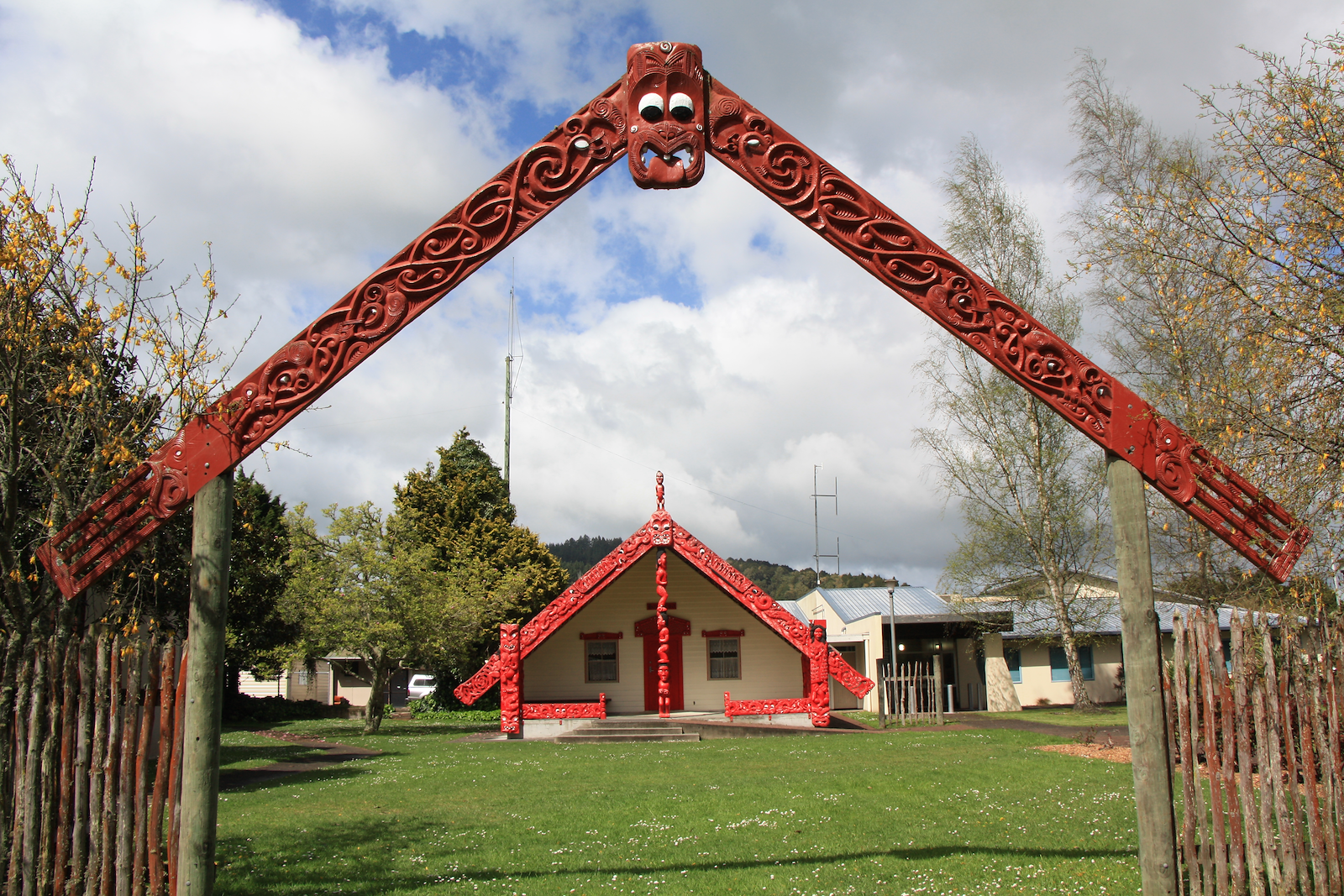
Morero Marae, Taumarunui
In Te Reo Māori, the marae atea is the open space in front of the wharenui (meeting house) which was traditionally part of a Pā (village). In modern usage the phrase is often shortened to marae, and has come to include all the land and buildings associated with the marae atea. Today marae are storehouses of history, mātauranga (knowledge) and taonga (treasures). Many marae are also venues for the provision of health, education, justice and social services.
In legal terms, a marae is a meeting place registered as a reserve under the Te Ture Whenua Māori Act 1993 ('The Māori Land Act'). Each marae has a group of trustees who are responsible for the operations of the marae. The Act governs the regulation of marae as reservations and sets out the responsibilities of the trustees in relation to the beneficiaries.
The Māori Land Court has published a guide to Māori reservations under Te Ture Whenua Māori on its website:
Traditional marae are normally owned by whānau, hapū and occasionally iwi. This means that marae are centres for whānau who connect with each other through whakapapa (genealogy). Since the mid nineteenth century, a number of urban marae have been established to serve the same purposes as traditional marae for Māori people living in urban settings. Many educational institutions have also established marae to provide a setting for their students, staff and communities. These non-traditional marae are based on kaupapa (theme) rather than whakapapa.
Oranga Marae
Oranga Marae is a programme of support, advice and investment for marae. It gives whanau and hapū advice and support to help develop their marae and achieve their goals. This support may include building projects and activities to restore cultural knowledge.
Oranga Marae is provided by Te Puni Kōkiri and the Department of Internal Affairs. Click here to visit the Oranga Marae webpage .
Extra support for marae
Te Puni Kōkiri provides facilitation and brokerage support for marae to access resources available from private and public sector agencies and groups. To access this support, please contact your local Te Puni Kōkiri office .
Online information and resources that marae may find useful have been grouped together under three key areas:
Cultural Infrastructure and Capability looks at marae communities, marae heritage, mātauranga Māori and marae usage.
Physical Infrastructure and Capacity which details physical access to the marae, buildings on the marae, utilities and capacity of the marae.
Administrative Infrastructure and Capability which covers legal structures, trustee roles and responsibilities, financial management, insurance, project planning, workforce and external relationships.
Te Puni Kōkiri has conducted a range of research activities to inform and assist marae to be self-determining and sustainable into the future. These activities included assessments into the health of marae (1997 and 2009), as a way to collate information on the success factors and barriers to marae development that could inform policy development.
Early in 2012, Te Puni Kōkiri released a report: Te Ora o Te Marae 2009 - The Status of Marae in 2009 based on information collected from marae throughout Aotearoa.
Click here for more publications about marae .
Further information and details of specific marae
Te kahui mangai.
Te Kāhui Māngai gives information on iwi identified in the Māori Fisheries Act 2004, and those iwi/hapū that have begun the process of negotiating settlement of their historical Treaty of Waitangi claims. This includes their rohe, hapū, marae, and other representative organisations.
This site contains information for the principal ancestral marae across Aotearoa, numbering almost 750 marae.
Museum of New Zealand
Te Papa Tongarewa
Open every day 10am-6pm
(except Christmas Day)
Free entry for everyone
Charges apply to some short-term exhibitions and activities
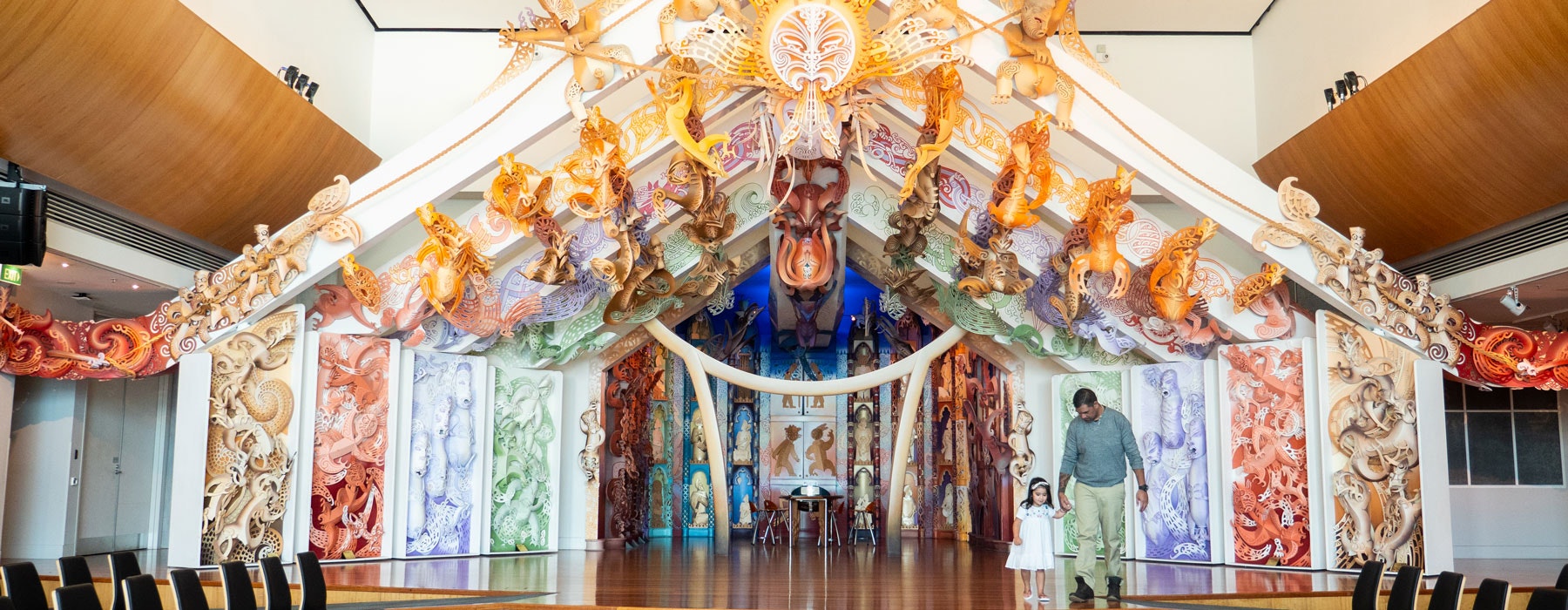
Rongomaraeroa Te Marae
Te Marae offers a singular experience within Te Papa and is also unique within Aotearoa . It is Te Papa’s response to the challenge of creating an authentic yet inclusive marae for the 21st century.
Permanent exhibition
Wheelchair accessible
Find out more about accessibility at Te Papa
The space comprises a marae ātea and wharenui that cater for all the purposes such places customarily serve. It is also a living exhibition that interprets for visitors the meaning of the marae experience, and acts as a showcase for contemporary Māori art and design.
Bicultural identity
Like other marae, this one is about identity – here, it is our nation's bicultural identity that is addressed. Te Marae embodies the spirit of bicultural partnership that lies at the heart of the Museum, and is based on the idea that Te Papa is a forum for the nation. All people have a right to stand on this marae through a shared whakapapa and the mana of the taonga held in Te Papa's collections.
Welcoming to all
All cultures can feel at home on this marae. Iwi can identify and relate to their ancestors through the striking contemporary carvings. So too can other cultures. Carved ancestral images reflect the occupations and origins of newcomers over the last 200 years – farmers, educators, clergy, parents, artists – linked with Pākehā , Asian, and Polynesian design references.
The meaning behind Te Marae
All people live in Te Ao Marama, the world of light, created when our ancestral parents, Ranginui and Papatūānuku, were forced apart. The floor of Te Marae can be seen as Papa, the Earth mother, with Rangi, the sky father, above. Our wharenui can be seen as Tāne, the son who forced his parents apart, thereby opening a space for us to live in.
As the children of Rangi and Papa established themselves in this world, they each developed special responsibilities – Tāwhirimātea, for the wind, Tangaroa, for the oceans, Tāne, for the forest, and so forth. Thus it is appropriate that our marae is situated here, at the confluence of these elements.
When the elements come together, as when people come together, there can sometimes be turbulence. For this reason, it was necessary for the children of Ranginui and Papatūānuku to develop protocols for meeting and ways for recognising one another. These protocols have been passed down for generations and are used on marae throughout the country, with minor variations.
The protocols on Te Papa’s marae were developed after extensive consultation. This ensured their integrity, as well as the flexibility needed to accommodate all iwi.
Naming our wharenui
The name of our wharenui on Te Marae is Te Hono ki Hawaiki. This name speaks of the connection to Hawaiki, the place of our spiritual origins. Accepting this spiritual idea of Hawaiki enables all people to regard Te Marae as a place for them to stand – a place to which they can belong.
Rongomaraeroa is the name of the whole marae, including entrances and pūwhara .
Guide to Rongomaraeroa in New Zealand Sign Language
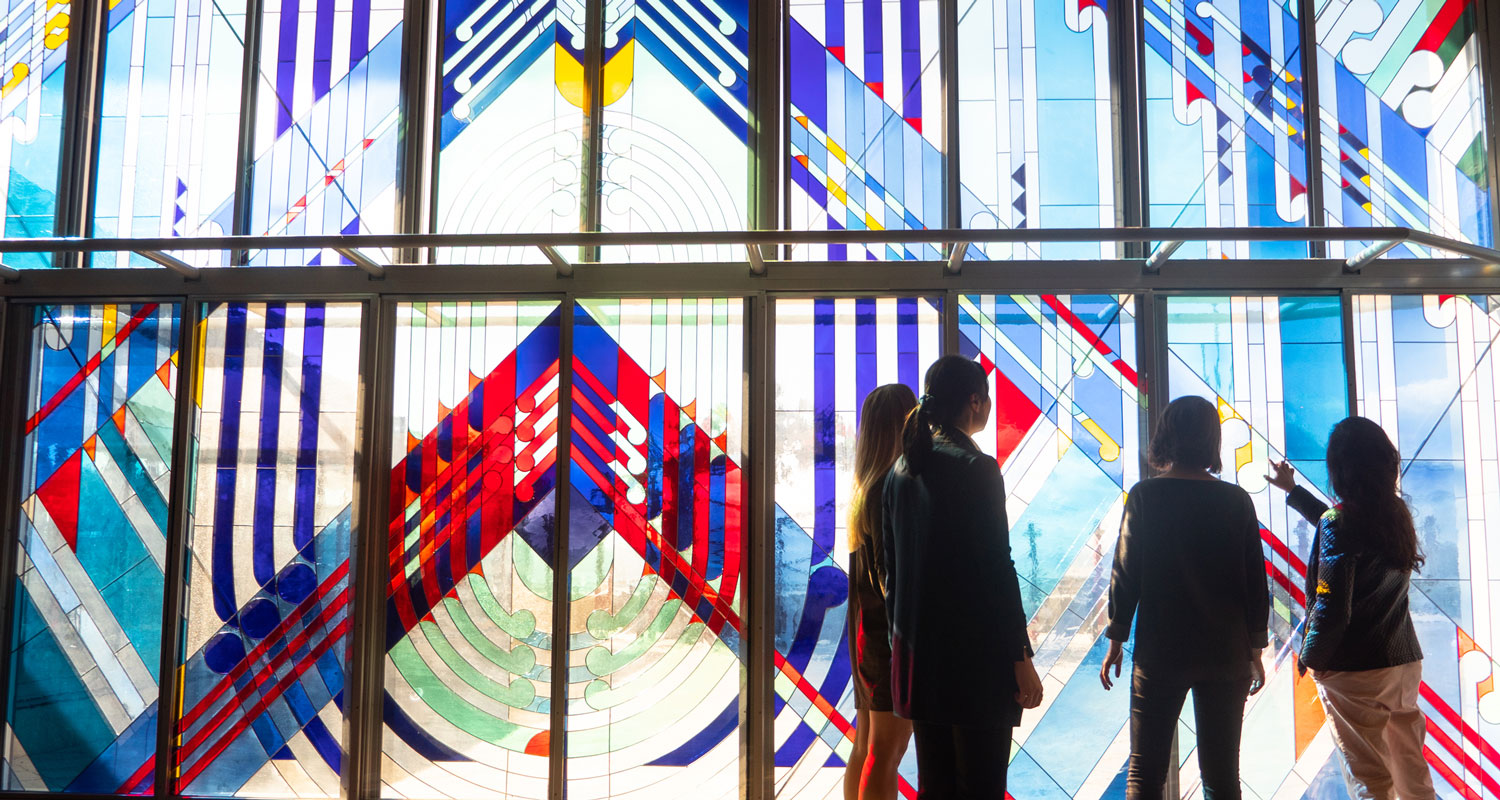
The windows on Rongomaraeroa, 2019. Te Papa
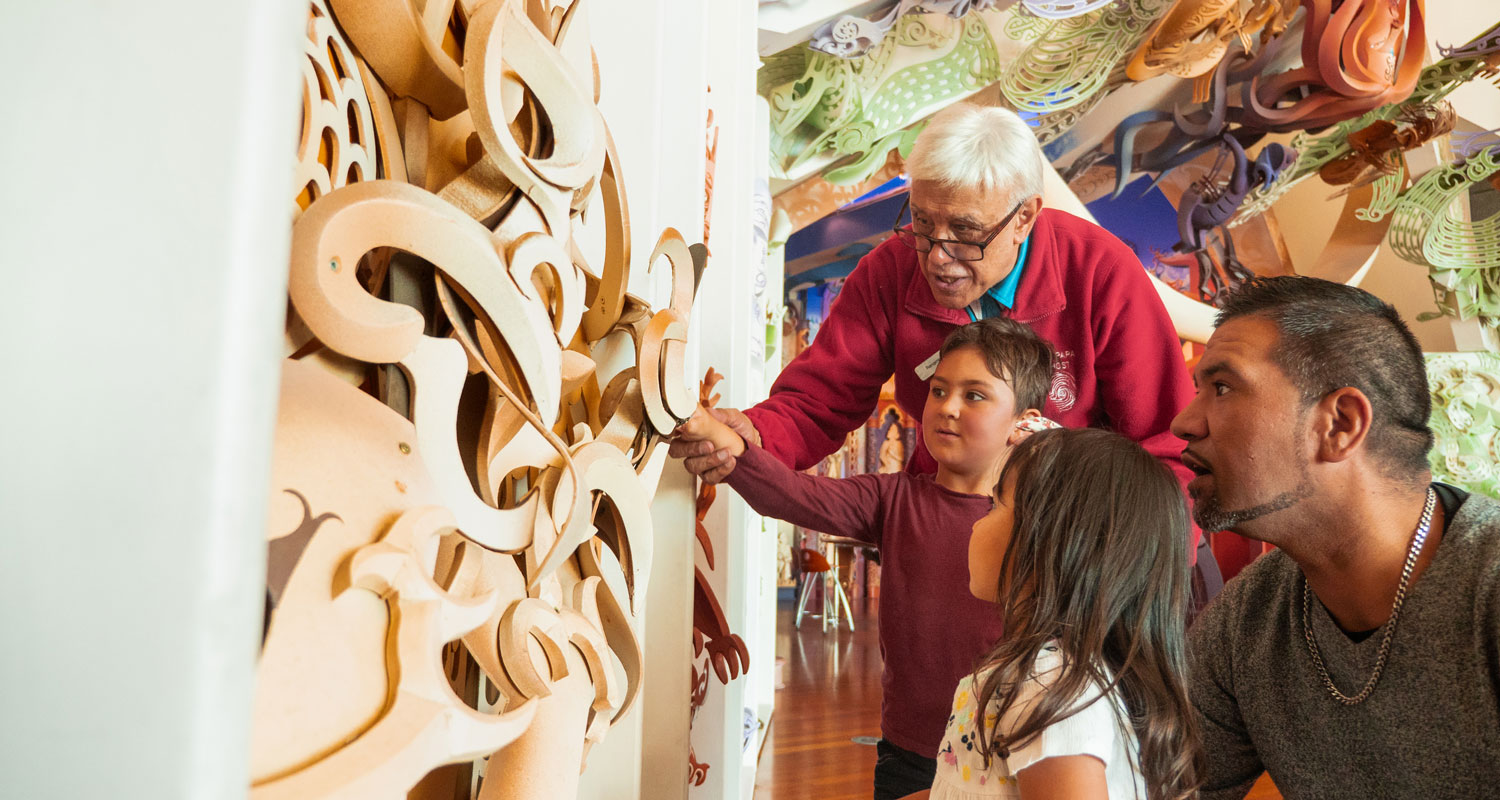
Looking at the carvings on Rongomaraeroa, 2019. Te Papa

Rongomaraeroa, 2019. Te Papa
Discover more Kia kitea ake
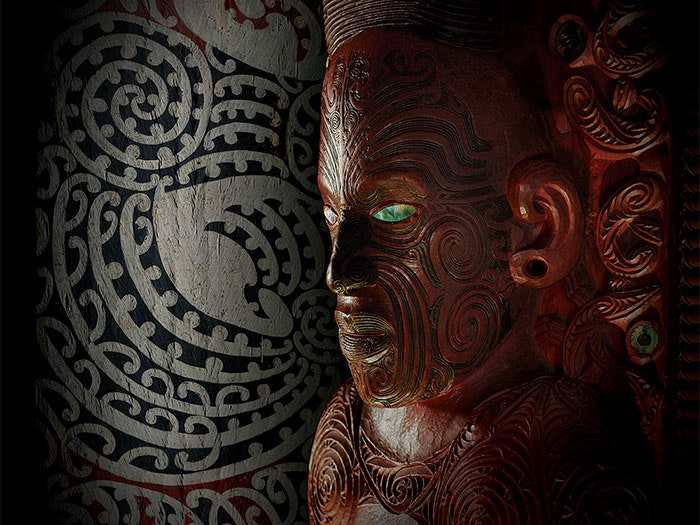
Ko Rongowhakaata: The Story of Light and Shadow
Explore the land, people, and stories of Rongowhakaata, an iwi whose unique art reflects their innate creativity, rich history, and innovative spirit.
29 Sep 2017 – 3 Feb 2022
Exhibition Ngā whakaaturanga
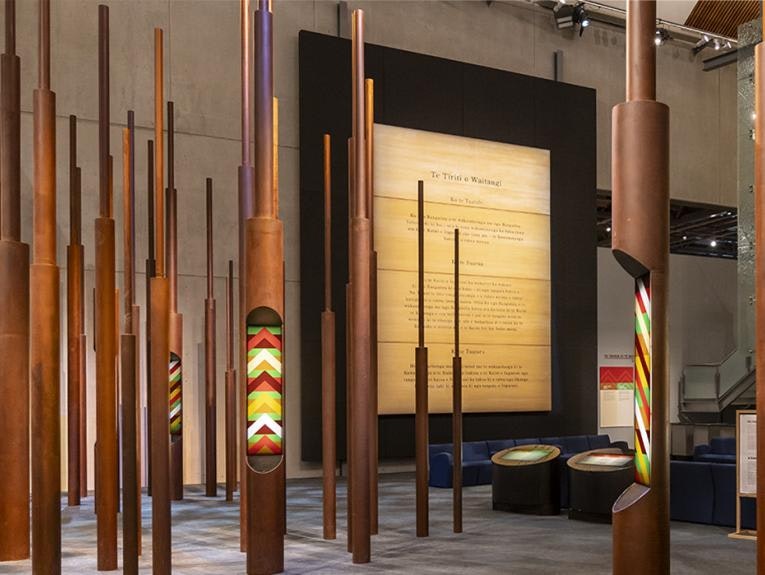
Treaty of Waitangi: Signs of a Nation
Discover how the Treaty has shaped relationships between the peoples of Aotearoa New Zealand.
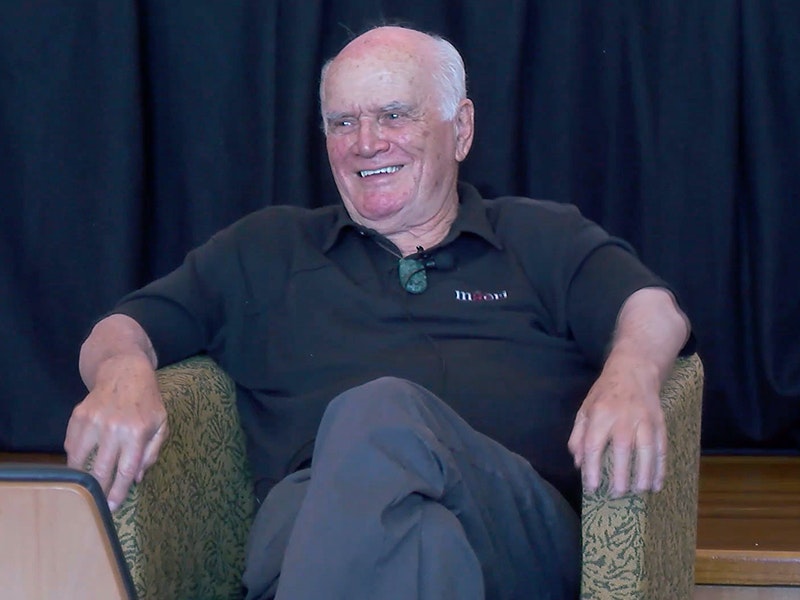
Rongomaraeroa kōrero: Dr Sandy Adsett
Dr Sandy Adsett is one of the most influential Māori artists and teachers of his generation. He spoke at Te Papa on Saturday 30 October, 2021, at the invitation of Te Papa and Pātaka Art+Museum.
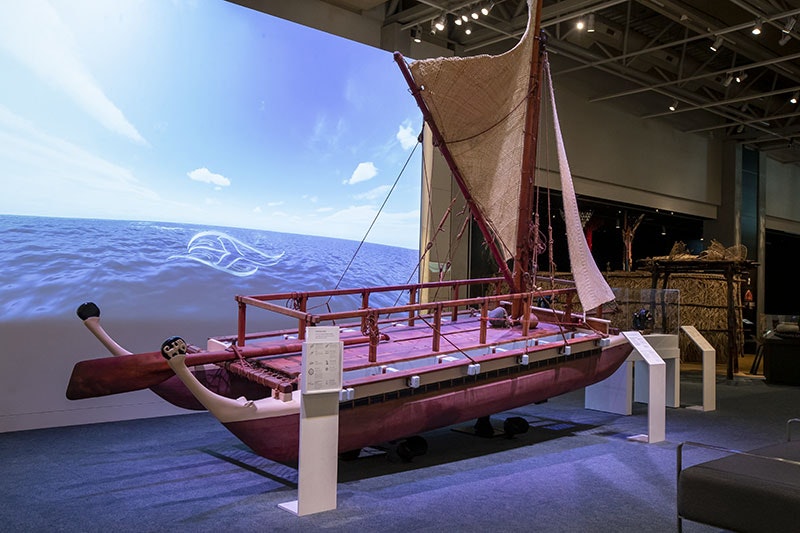
Mana Whenua
Mana Whenua takes you on a stirring journey that explores and celebrates Māori as tangata whenua (the indigenous people) of Aotearoa New Zealand.
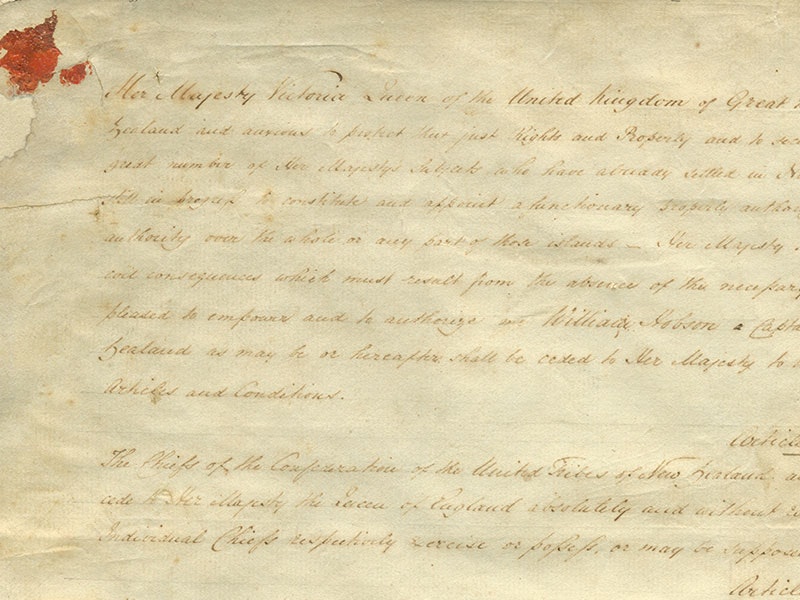
The Treaty of Waitangi
It is celebrated and argued over. It contains contradictions, and yet it offers clarity. It has a rocky past, but it is providing New Zealanders with new ways forward. It is the Treaty of Waitangi – this nation’s founding agreement.
Get our newsletter
Stay in the loop about our wide range of events and exhibitions., follow our social media channels for a glimpse behind the scenes at te papa., join friends of te papa, friends enjoy benefits and discounts including invitiations to previews and private viewings., find out how you can support te papa through a donation or bequest by becoming a patron..

Nga hau e wha National Marae
Te Runanga o Nga Maata Waka are the current guardians of the Nga Hau E Wha National Marae.
Its carvings depict the history of New Zealand, showing eight warriors paddling a canoe which is representative of all the ancestral canoes at Waitangi in 1840 and, opposite, Captain William Hobson, RN, Governor of New Zealand at that time. This entrance symbolises the Marae as a place for all citizens of New Zealand.
Nga Hau E Wha National Marae is situated on approximately 14 acres of land located in the eastern suburbs of Christchurch. It is the largest National Marae in New Zealand.
The Nga Hau E Wha National Marae is for every New Zealander and the vision of the Marae is:
“Kia tü tënei marae hei taonga mo ngä tängata katoa, me te whakaörite i ngä tikanga tino ätaahua o Aotearoa me ngä iwi ö ngä hau e whä.”
“To be a marae for all people and to share New Zealand’s unique cultural richness with the peoples of the four winds.”
Acquiring the site
Nga hau e wha national marae is situated on approximately 14 acres of land located in the eastern suburbs of christchurch. it is the largest national marae in new zealand..
In 1848, members of Ngäi Tahu sold most of Canterbury to the New Zealand Company for 2,000 pounds and promises of reserves for present and future needs. When the sale of land was arranged Ngäi Tahu understood that in return for their land “…our places of residence and cultivation are to be kept for our own use, for the use of our children and for those who may follow after us… we leave to the Government the power and discretion of making us additional reserves of land.” Subsequent to this deal however no reserves were surveyed in Christchurch and Mäori cultivations and settlements were lost.
In 1858, the Canterbury Provincial Government granted Little North Hagley Park as a Mäori reserve provided a “…wood or shingle house was erected on the site.”
Historically this site was a resting place for Mäori travellers. Funds were not available and no building was erected.
In 1862, the Government notified that Little North Hagley Park was available for the Mäori to tether their horses rather than in Victoria Square. (Then Market Square). The Government wanted the site back in 1872 and agreed to find somewhere to replace it. It seems nowhere was found and subsequently confusion arose over the ownership of this land.
Efforts to find a suitable site for a National Marae in Christchurch continued over the years although a number of tribal and urban marae already exist in Canterbury. Finally in 1977, Mr Hamish Hay, the then mayor of Christchurch offered Cuthberts Green as the only possible site in Christchurch. The offer was accepted by certain Mäori representatives, but apparently not by Ngäi Tahu, the tangata whenua.
Marae establishment
The Council made a public announcement on the 23rd of September 1977 “…considering allocation of part of Cuthberts Green as a marae site.” A year later Ngä Hau E Whä Christchurch Marae Incorporated was established. The proposed marae siting was strongly opposed by the local community and 179 public objections were made to the proposal, all from residents of neighbouring properties. The matter went to the Planning Tribunal and in November 1979, the Council received and adopted the Commissioner’s recommendation and approved the application for the planning and consent for the establishment of a marae. The matter was then taken to the Court of Appeal, however the appellants lost and the marae was given the go ahead.
The clearing and levelling of the site continued through the P.E.P labour scheme and from 1981 to 1990 the complex was built. In May 1990 the Marae was officially opened.
Marae values
Kia möhiotia ake, he marae tënei mo:
- te whakatinana i te mana, i te wehi, i te möhiotanga, me te whakapakaritanga o ngä tängata katoa;
- ngä mahi tino pai me ngä mahi tohunga e mahiatia ana i runga i te ngäkau whakangahau, i te ngäkau pono, me te ngäkau tika;
- te tiaki pono i ngä taonga katoa;
- te häpai i ngä tikanga, i ngä ähuatanga pai o te whänau;
- te kotahitanga o ngä iwi katoa;
- te manaaki tängata;
- te kaha ki te mahi hou, te mahi kakama, me te mahi ngäkau tapatahi.
To be recognised for:
- fostering dignity through respect, recognition and development of all people;
- excellence and professionalism through leadership by example, achievement and accountability;
- preservation of all things that are treasured;
- promotion of family values;
- actively practising unity;
- a commitment to hospitality, and
- demonstrating innovation, initiative and integrity.
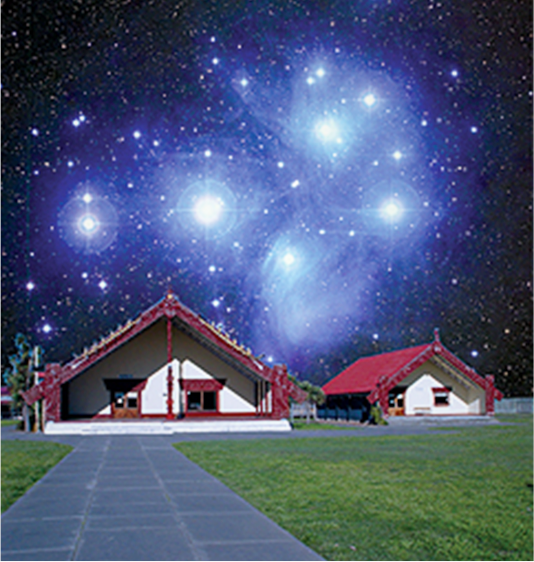
The mission
Kia whakapakari i te ngäkau möhio o ia iwi o te ao, i raro i te tikanga Mäori, kia whakatinana, ä, kia whakapümau hoki i te whakaaro kotahi mo ngä tikanga, ngä whanaungatanga, me ngä mahi whai ora a ngä tangata katoa.
To enhance understanding between all people, embracing Mäori values, so as to establish and maintain a major focal point for cultural, social and economic development.
Canterbury earthquakes
Many business, organisations and whanau were displaced in the Canterbury earthquake of February 2011. Nga Hau E Wha National Marae has been host to a variety of organisations since this time.
Read about the full list of agencies we host .

- Marae Group Visits
Home » Marae Group Visits
Oranga Marae
- He Rourou Aroha
- Te Kōti Rangatahi Māori
- Huria Book Club
Huria Marae offers a cultural learning experience for all ages and all groups of people. Your visit will often include a pōhiri (private welcome) and insight around marae protocol, customs and local history. In the past we have hosted Early Childhood Centres, Primary, Intermediate and Secondary Schools to Tertiary Institutions, Businesses and Ethnic Cultural Groups. We can provide overnight stays, and will work with you to customise a program for your intended visit.
For more information please contact the Huria Trust office.
Email: [email protected]
Phone: (07) 578 7838
Subscribe to Our Newsletter
Te Kākā Wahanui is our monthly newsletter, complete the form below to subscribe. You can unsubscribe at anytime.
Kiwilanders New Zealand

Maori Culture in New Zealand: A Journey into NZ Indigenous Heritage

🛖 Introduction to the Maori Culture and its People
Before we dive into the intricacies of Maori culture, it’s essential to understand who the Maori are. The Maori are the indigenous Polynesian people of New Zealand, believed to have arrived at the islands around 700 years ago.
Their ancestors navigated the vast Pacific Ocean in waka (canoes) and settled in Aotearoa, developing a unique culture deeply intertwined with the land and sea.

1. Te Reo Maori: The Language of the Land
The Maori language, Te Reo Maori, is the living essence of Maori culture. It carries the stories, wisdom, and history of the people.
While English is widely spoken in New Zealand, there is a growing effort to revitalize Te Reo Maori. Learn about the language’s unique sounds, grammar, and essential phrases that showcase the importance of preserving this cultural treasure.
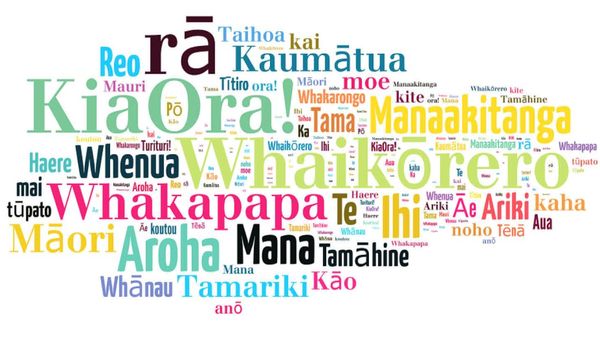
2. Whakapapa: The Art of Genealogy
Whakapapa, or genealogy, is central to Maori identity. It traces each person’s ancestral lineage and connections to the land.
Understanding one’s whakapapa is about knowing where you come from and your responsibilities to the land and community. Delve into the intricacies of whakapapa and its significance in Maori culture.
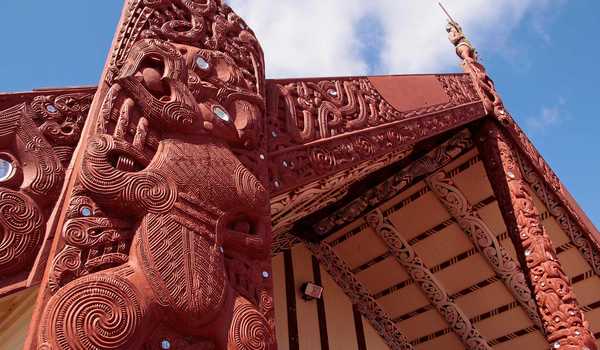
3. Tikanga Maori: Cultural Protocols and Customs
Tikanga Maori refers to the customs and protocols that govern Maori life. These protocols are deeply rooted in tradition and are a way of showing respect for the land, people, and ancestors.
Explore key aspects of Tikanga Maori, including the powhiri (welcome ceremony), koha (gift giving), and tapu (sacredness), and understand how they shape daily life.
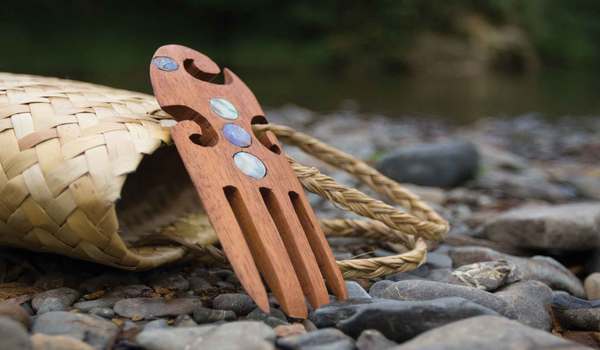
4. Marae: The Heart of Maori Communities
The marae is the traditional meeting ground and focal point of Maori communities. It’s where rituals, ceremonies, and important gatherings occur
Learn about the layout of a marae, the significance of the wharenui (meeting house), and the customs observed during marae visits.

5. Haka: The Powerful War Dance
The haka is one of the most recognizable elements of Maori culture, thanks partly to the world-famous All Blacks rugby team. But the haka is more than a performance; it’s a powerful and emotional expression of Maori identity.
Discover the history of the haka, its various forms, and its role in both traditional and contemporary settings.

6. Poi and Mau Rakau: Traditional Arts and Games
Maori culture is rich with traditional arts and games, many still practiced today. The poi, a performance art using balls on strings, and mau rakau, the art of weaponry, are just a few examples.
Explore the origins and significance of these cultural practices and their role in preserving Maori traditions.
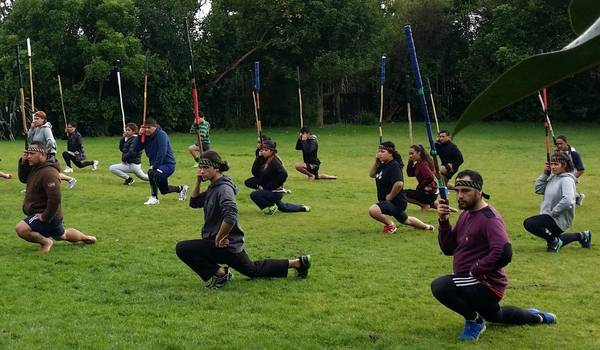
7. Whaikorero: The Art of Oratory
The art of whaikorero, or traditional oratory, is integral to Maori culture. Maori speakers, known as kaikorero, use eloquence, symbolism, and storytelling to convey messages and connect with their audience.
Delve into the structure and significance of whaikorero in Maori ceremonies and gatherings.

8. Land and Identity: The Connection Between Maori and the Environment
The relationship between the Maori people and the land is profound. The concept of kaitiakitanga, or guardianship, highlights the Maori responsibility to care for the environment.
Discover how Maori culture intertwines with the natural world, from the spiritual significance of certain landmarks to sustainable practices that ensure the land’s well-being.
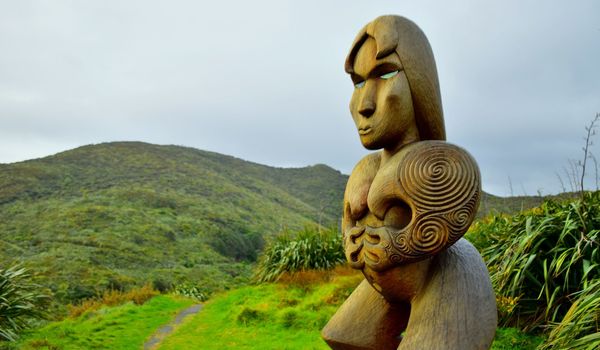
9. Contemporary Maori Culture: Navigating the Modern World
Maori culture is not static but adaptive, evolving alongside the changing world. Explore how contemporary Maori artists, musicians, writers, and leaders continue to express and celebrate their culture while addressing modern challenges.
Learn about initiatives to preserve and revitalize Te Reo Maori and cultural practices.
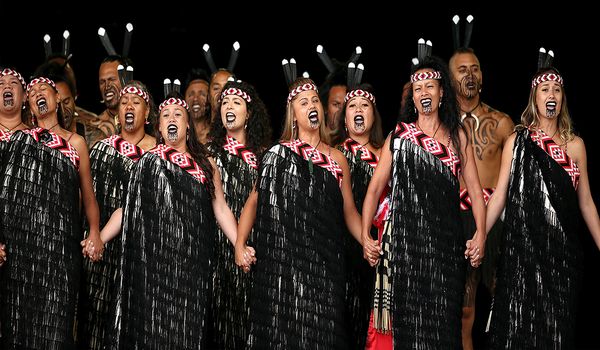
10. Te Ao Maori: Maori Worldview and Cosmology
Maori cosmology, known as Te Ao Maori, offers a unique perspective on the world and the interconnectedness of all things.
Dive into the Maori creation story, the role of the atua (gods), and the significance of the natural elements in shaping Maori beliefs and traditions.

🗾 Activities and Tours Related with the Maori Culture in New Zealand
New Zealand offers a unique opportunity for travelers to immerse themselves in the rich cultural heritage of the Māori people through various activities and tours . From traditional performances to outdoor adventures, visitors can experience the vibrant traditions and stunning landscapes that define Māori culture.
Several platforms, such as Viator and BookMe , make it convenient for travelers to book these experiences in advance, ensuring a seamless and enriching journey.
Māori Cultural Experiences:
Immerse yourself in the heart of Māori traditions with visits to marae, the cultural meeting grounds. Participate in welcoming ceremonies, witness powerful haka performances, and learn about the significance of whakapapa as you connect with the stories of New Zealand’s indigenous people.
Many tours offer an authentic glimpse into daily Māori life, providing a deeper understanding of their customs and values.
Traditional Performances:
Experience the power and energy of the haka firsthand by attending traditional Māori performances. These events often include kapa haka, a dynamic song, dance, and storytelling showcase that brings Māori mythology and history to life.
Outdoor Adventures Rooted in Māori Heritage:
For those seeking an adrenaline rush intertwined with cultural significance, consider Māori-guided outdoor adventures. Explore the pristine landscapes of New Zealand through activities such as waka (canoe) tours, guided hikes to sacred sites, or even traditional fishing experiences.
These excursions provide a unique perspective on the Māori connection to the land and its resources.
🧑💻 Booking with Viator and BookMe
To make the most of your Māori cultural journey, platforms like Viator and BookMe offer a convenient way to plan and book activities in advance. Browse through a curated selection of experiences, read reviews from fellow travelers, and quickly secure your spot.
Whether you’re interested in a guided tour of a Māori village or an adventurous exploration of ancestral landscapes, these platforms streamline the booking process, ensuring a seamless and memorable adventure in the heart of Māori culture.
🔗 For additional information about Maori tours and activities, we have created the following article: 12 Best Maori Tours in New Zealand

Conclusion: Maori Culture’s Enduring Legacy
As we conclude our journey into Maori culture, we recognize its enduring legacy and the vital role it plays in shaping the identity of Aotearoa, New Zealand.
The Maori people, with their profound connection to the land and rich cultural traditions, offer a profound lesson in preserving indigenous heritage in an ever-changing world.
Table of Contents

Luis Domenech Garcia
Welcome to New Zealand! I'm an expat who has called this beautiful country home for 11 years. During my time in NZ, I worked as a campervan dealer, and now I'm excited to share with you the best tips and experiences about this amazing country. Join me on a unique journey as we embark on adventures together. Your Kiwi adventure starts right here!
Related posts

Best Coffee in Queenstown, New Zealand

List of Islands in New Zealand

The 12 Best Hikes and Walks around Christchurch
Photographs credited to © Paul Scot Smith and Awataha Marae
-883-868-407.png)
Nau Mai Haere Mai and welcome to "TE NEWS" A comical and sometimes serious look at recent news stories from around the Marae, Motu and the world. The views and opinions expressed in "TE NEWS" are not those of the Awataha Marae.

The visiting circus!! March 2020
After visiting the Summer Vibes Waitangi Day Festival and giving a glowing report card to the Awataha Marae, Dan Bidois local MP dhas now written to the Minister for Land Information with alleged “Community Concerns” about Awataha Marae! He must have forgotten what he said about Awataha only 2 weeks earlier. Anei ra matakitaki mai...
www.facebook.com/summervibesnz/posts/135623867937743
The Marae committee are incredibly angry with Dan and no doubt the over 5,000 people who attended the Waitangi Day festival would find it hard to understand Dan’s position now, given the success of the event.
"How dare he (Dan Bidois) come to the Marae enjoy our hospitality, shake hands with all our guests and tell us to our faces how great it was only to tiko on us later" says long time serving kaumatua Dena Leonard. "We are sick and tired of people using us to gain political points. . We are the ones here every day looking after manuhiri doing the dishes cleaning up cooking the kai, manning the paepae...where the bloody hell are they!! They have no Mana here.
Dan you got it wrong! :(
"See letter here; Marae responds to Dan Bidois March 2020"
/site/awataha/SC754E0143220031014540.pdf
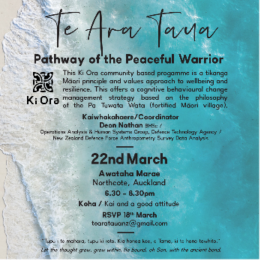
Matariki heralds a new future for Awataha Marae; 13 July 2020
It’s Matariki the Maori new year and Awataha is celebrating this along with the outcome of the commissioner for lands decision to renew its perpetual lease with the crown for another 33 years.
“We find the decision both justified and sensible” says CEO Anthony Wilson. Although we have some matters to sort out we thank the commissioner for lands for the decision. The news has come at a very special time of year for us as Maori. A time where we look forward to the future and reflect on the past. “A Tohu or sign”.
We are satisfied that the commissioners review has sought to apply matters of law and common sense in their decision and has put much conjecture and political postering to one side.
The land tenure has always remained the paramount issue for our organization to have resolved so we can develop and utilize the land to its fullest potential and forward our goals and objectives.
Our plans for the future include expanded health and social service facilities, education facilities, completed wharenui, accommodation and dedicated tangihanga space. All of this requires adequate funding.
The granting of the lease renewal is a very positive step towards reaching our goals however the land in fact still remains subject to our own WAI 187 treaty claim along with other tribal interests. Says Wilson.
Our Matariki prayer is “to unite the various interests into a cohesive well informed well resourced representative body as we move forward in the future and reach our goals together”
Something we have been pushing for now, for many years. Says Mr Wilson.
- Sunday Star Times - Kings and his Dad
Forgot your password?

Join us on Facebook
- Back to top
Māori Culture: What is a Marae?

Unique to the Māori cultural experience is the marae , a communal and sacred meeting ground that provides everything from eating and sleeping space to religious and educational facilities.
In pre-colonial times, the marae was central to everyday life in Aotearoa ( New Zealand ). It was where tribal societies gathered to eat and sleep, all under the same roof. The notion of the nuclear family was non-existent, and Māori tikanga (lore) constituted a more communal lifestyle. While Western ideologies of the nuclear family emphasise independence, the Māori philosophy, and by extension the marae, is firmly rooted in the notion of interdependence.

The marae also provides a means of staying connected to spiritual ancestors. You will notice that each marae across the country is named after an ancestor of a tribal area. As such, the distinct architecture of the whare tipuna (ancestral house) is designed to embody the likeness of this ancestor.
At the front of the meeting house is the kōruru , carved to represent the face of the ancestor. The two long beams trailing down are the maihi and represent the arms, at the ends of which are the raparapa or fingers of the ancestor. Supporting the beams are the amo , or legs, holding up the entirety of the building. Finally, standing aloft at the top of the marae is the tekoteko , or statue, which represents the ancestor in all their revered likeness.

Yet, the exterior design of the marae is incomparable to its interior. Inside, tukutuku , or weaved panels and carvings, trace the entire history of the tribe and their ancestors through Māori symbology . Running along the roof is the tāhuhu , or spine of the ancestor, which holds together the whare tīpuna . Standing at the centre of the whare tīpuna is the poutokomanawa. This beam not only holds up the entire structure but represents the heart of the ancestor. By extension, it is also the heart of the tribe and the community and serves as a reminder that without a unified heartbeat there can be no community. For most marae around Aōtearoa, it is for these reasons they do not allow shoes to be worn in the whare tīpuna . It represents the body of the ancestors, and to wear shoes while entering their likeness would be to trample on their mana and mauri .

The arrival of Christianity in the 19th century began the abandonment and destruction of these thriving cultural centres. With the urban migration of Māori to the cities in the 1960s, Māori no longer live primarily on marae. Yet, while communal living has dwindled, the marae still play a significant role in modern Māori society, as with the Tongan mala’e and Samoan māla’e . Marae are still used for a multitude of cultural rituals, including birthdays and weddings, yet the most significant ritual is the tangihanga (funeral rite). For most New Zealand Māori, they will return to their marae for at least two days of grieving. During this time, the hosting tribe will have to look after thousands who have travelled to pay their respects. The visitors will be fed and provided with shelter and rest facilities. By the third day, it is left to the marae to bury the individual and ensure that all necessary protocols and rituals have been followed. Therefore, while marae are no longer the thriving hubs of yesteryear, they are still a vital element in preserving the cultural vitality of the Māori .

KEEN TO EXPLORE THE WORLD?
Connect with like-minded people on our premium trips curated by local insiders and with care for the world
Since you are here, we would like to share our vision for the future of travel - and the direction Culture Trip is moving in.
Culture Trip launched in 2011 with a simple yet passionate mission: to inspire people to go beyond their boundaries and experience what makes a place, its people and its culture special and meaningful — and this is still in our DNA today. We are proud that, for more than a decade, millions like you have trusted our award-winning recommendations by people who deeply understand what makes certain places and communities so special.
Increasingly we believe the world needs more meaningful, real-life connections between curious travellers keen to explore the world in a more responsible way. That is why we have intensively curated a collection of premium small-group trips as an invitation to meet and connect with new, like-minded people for once-in-a-lifetime experiences in three categories: Culture Trips, Rail Trips and Private Trips. Our Trips are suitable for both solo travelers, couples and friends who want to explore the world together.
Culture Trips are deeply immersive 5 to 16 days itineraries, that combine authentic local experiences, exciting activities and 4-5* accommodation to look forward to at the end of each day. Our Rail Trips are our most planet-friendly itineraries that invite you to take the scenic route, relax whilst getting under the skin of a destination. Our Private Trips are fully tailored itineraries, curated by our Travel Experts specifically for you, your friends or your family.
We know that many of you worry about the environmental impact of travel and are looking for ways of expanding horizons in ways that do minimal harm - and may even bring benefits. We are committed to go as far as possible in curating our trips with care for the planet. That is why all of our trips are flightless in destination, fully carbon offset - and we have ambitious plans to be net zero in the very near future.

Places to Stay
Hip holiday apartments in marlborough you'll want to call home.

The Best Hotels in Akaroa, New Zealand

The Most Budget-Friendly Hotels in Canterbury, New Zealand

The Best Spa Hotels in Canterbury, New Zealand

The Best Hotels to Book in Paihia For Every Traveller

The Best Hotels in Canterbury, New Zealand, for Every Traveller

Hip Apartments in Canterbury You'll Want to Call Home

The Best Hotels in Taupo for Every Traveller

The Best Hotels in Marlborough, New Zealand, for Every Traveller

The Best Hotels to Book in Picton, New Zealand, for Every Traveller

The Best Hotels to Book in the Bay of Islands for Every Traveller

The Best Hotels in Napier for Every Traveller
- Post ID: 779372
- Sponsored? No
- View Payload
Māori culture

Māori culture is an integral part of life in Aotearoa, New Zealand
For millennia, Māori have been the tangata whenua, the indigenous people of Aotearoa. Arriving here from the Polynesian homeland of Hawaiki over 1,000 years ago, the great explorer Kupe, was the first Māori to reach these lands.
Unique cultural experiences
Embrace the manaakitanga of our people.
Manaakitanga (showing respect) is all about welcoming guests and providing great hospitality, something which all New Zealander's pride themselves on. Make the connections between our past, present and future by embarking on guided experiences.
Learn more about Māori culture
Find māori culture, where to experience māori culture.
There are over 100 iwi (tribes) in Aotearoa. Each with their own stories to tell.
#MāoriCulture
- Share on Facebook
- Share by email
- Explore Tūhura
- Collections Ngā Kohinga
- Interviews Ngā Uiuinga
- Profiles Ngā Tāngata
- Watch list Rārangi Mātakitaki
We're sorry, but something went wrong
Please try reloading the page
We're sorry, but your browser is unable to play this video content.
If this continues please try upgrading your browser or contact us for assistance.
We're sorry, but this video is currently unavailable on mobile.
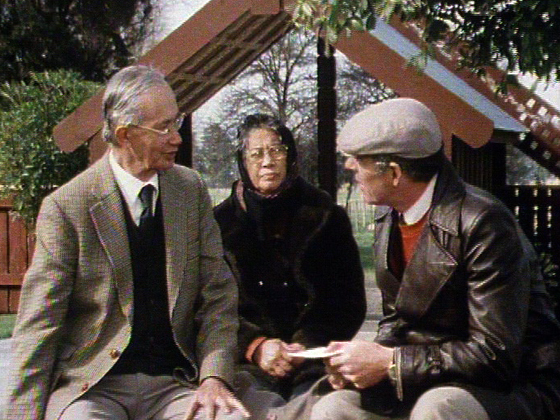
The Beginner's Guide to Visiting the Marae
Television (full length episode) – 1984.
- Related videos
- Comments (10)
Filmed at Kauwhata Marae in the Manawatu, The Beginner’s Guide to Visiting the Marae is a straightforward and respectful explanation of basic marae protocol, from the wero, to the karanga, pōwhiri, whaikōrero, waiata, koha and the hongi. The programme was made in 1984 when Pākehā were generally less familiar with visiting marae, so host Ian Johnstone presents the documentary from the perspective of a person rather more apprehensive about marae protocol than might be the case in 2011. That aside, the doco remains an effective primer for 21st Century marae novices.
If you have to speak, just be yourself. Sincerity is the hallmark. – Kauwhata Marae elder Wiremu Parker
Key Cast & Crew

Ian Johnstone
Producer, Reporter

Keith Slater

Stephen Payne

Michael Goodbehere

John McNicholas

Caroline McGrath
Produced by.

Ngā Taonga Sound & Vision - TVNZ Collection
- ngati kauwhata marae
Documentary
If you liked this, you might also like...
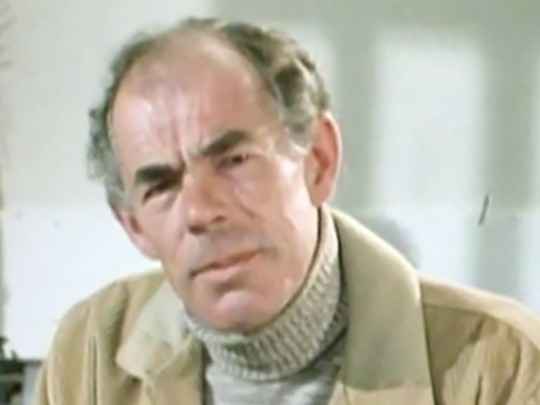
The Beginner's Guide to...
The Beginner's Guide... was a series of...
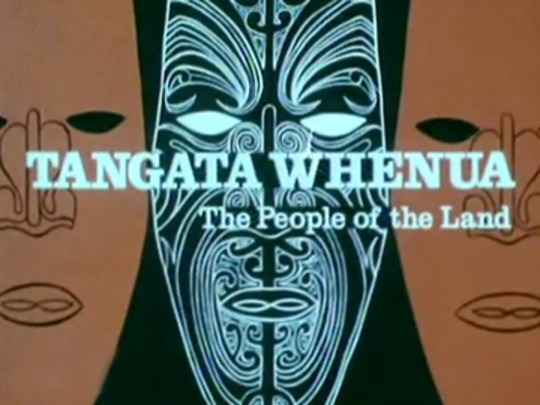
Tangata Whenua
A seminal Māori documentary series
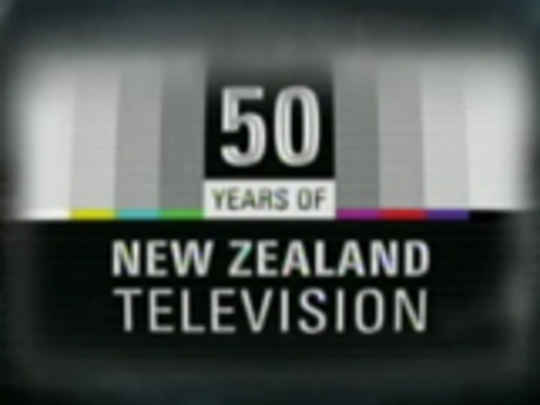
50 Years of New Zealand Television
Ian Johnstone is interviewed in this programme

The 1984 Leaders Debate
Johnstone mediated this famous political debate
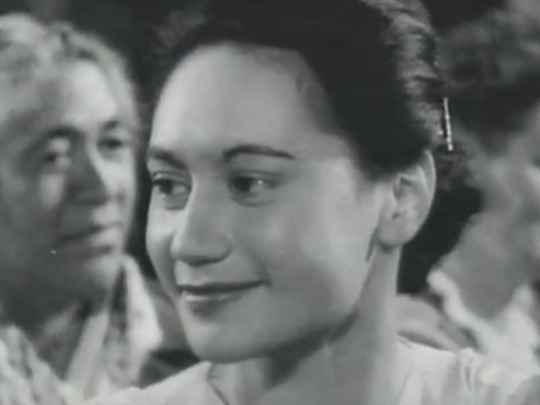
Aroha: A Story of the Māori People
An NFU film also featuring Māori traditions, aimed at a...

Someone Else's Country
A documentary narrated by Ian Johnstone
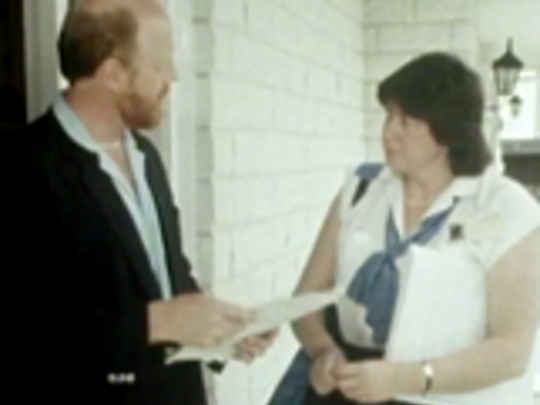
The Beginner's Guide to the Census
Another title in this series

Johnstone's Journey - Settling for Suburbia
Another documentary presented by Ian Johnstone
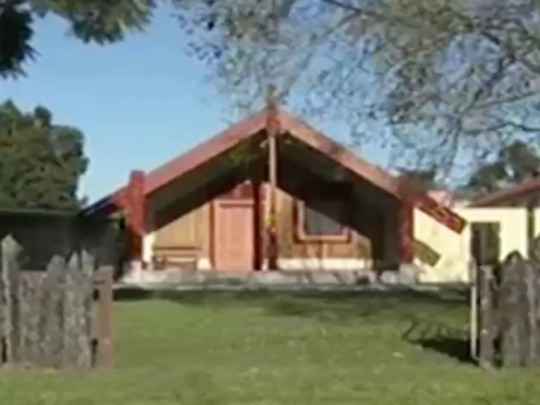
Marae DIY - Manutuke Marae (Series Three Episode)
A 2006 makeover of Manutuke Marae
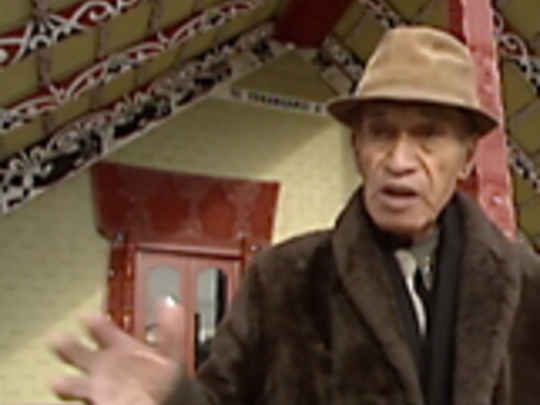
Te Marae - A Journey of Discovery
The history and preservation of marae
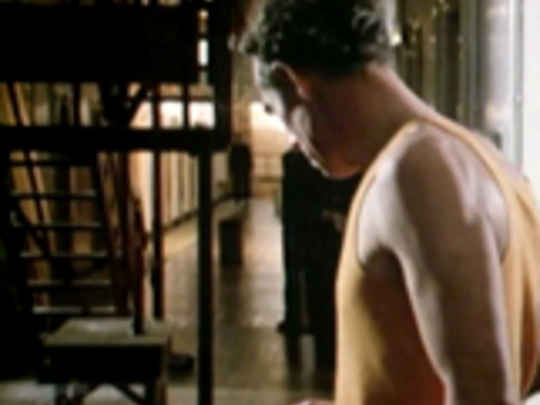
The Beginner’s Guide to Prisons
Ian Johnstone presents another guide from the series
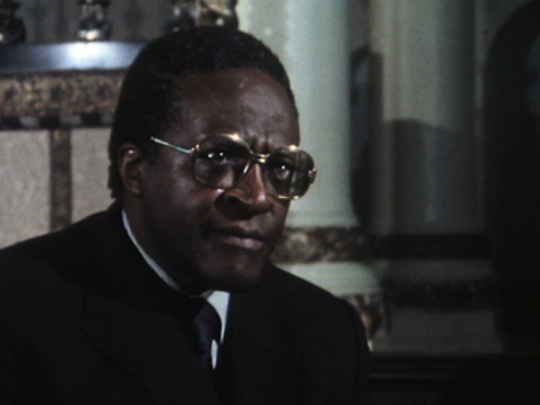
Seven Days: South Africa - The Black Future
Ian Johnstone explores a different homeland
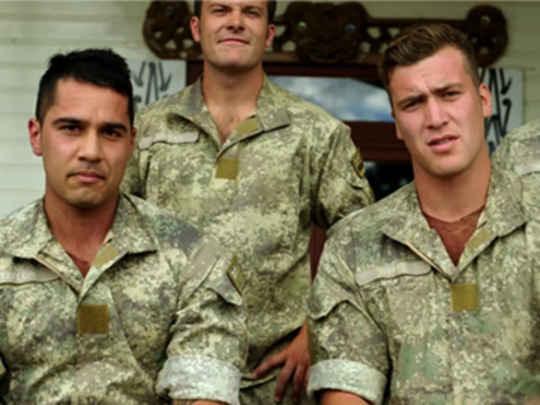
Marae DIY - Rongomaraeroa-o-nga-hau e wha Marae (Series 11, Episode Three)
The NZ Army marae gets a Marae DIY makeover
Share this video
- Embed this video
- Badge this video
Which size would you like?
Copy this code and paste it into your website.
Which clip would you like to embed?
Start clip at:
Beginning This time: eg. 1m7s
Would you like the clip to be a fixed size or responsive?
<!-- Start NZ On Screen - The Beginner's Guide to Visiting the Marae Size: 585 by 410 --> <iframe width=" 585 " height=" 410 " style="width: 585px " src=" https://www.nzonscreen.com/embed/e84cb483d041330e " frameborder="0" allowfullscreen ></iframe> <!-- End NZ On Screen - The Beginner's Guide to Visiting the Marae -->
Don't have an account? Create an account here

To deliver a platform for Māori investment enabling sustainable, economic and cultural operations
We are open to discussing and forming strategic partnerships

He herenga marae, he herenga tāngata, he oranga marae, he oranga tāngata! Ka puta ki te whai ao, ki te ao mārama, Tihei Mauri Ora!
Ko Ngongotaha te maunga Ko Awahou te awa Ko Tarimano te marae Ko Ngati Rangiwewehi te hapu Ko Te Arawa te iwi Ko Breviss Wolfgramm ki au
Breviss has more than 30 years of business expertise holding senior and executive roles within Military, Hospitality, Health, Blockchain Technology and Film & Television industries.
Breviss has been a world group stop smoking specialist, feature film line producer, commercials presenter, video director, television show writer, drone operator, media broker, and marketing, digital/social media strategist and was recently appointed as a cultural consultant for the NZ KidsCan Charity.
Breviss is a proven and successful digital change agent and broker for multiple organisations, He has an innovative digital & growth hacking marketing portal called Monkey Majic Solutions Ltd.
Breviss Wolfgramm

Ko Tainui te waka Ko Mangawhero te awa Ko Pane-hora-katoa te maunga Ko Paparamu te marae Ko Te Apunga te hapu Ko Ngāti Maniapoto te iwi Ko Ngāpuhi te iwi Ko Hyrum Sunnex ki au
Hyrum is a performance sports coach who specialises in strength and conditioning. Hyrum has represented and been selected for multiple National and Regional sports teams.
Hyrum is also a graphic designer, web developer and business owner with over 23 years in the sales/graphics/marketing digital areas where he has have worked for various major media streams and excelled in the sales and marketing areas.
His skill set is bringing people together and always getting the best out of them. Hyrum’s favourite quote in business or sport is, “Always give your best whatever your best is”. Hyrum knows that in life “somedays we have stuff going on or just crap days, where our best today might not be like our best the previous day, but as long as we are always giving our best, that’s all that matters.”
Hyrum Sunnex

WE WILL ENCOURAGE THE REVITALISATION AND ENGAGEMENT OF OUR LANGUAGE AND CULTURE
There is no current online booking platform available for groups of families, boutique tourist groups, sports team groups, university groups and school groups wanting to book Marae around the country online. Book a Marae will provide a customised booking platform to culturally connect users with ease for cultural, community or commerce engagements in a crisis or in peacetime
WHAT IS BOOK A MARAE?
Online marketplace.
Book a Marae is an online marketplace that has a cultural, community and commerce approach. It is an ecosystem built on high standards, best practice and resilience which is driven by local Marae and its people in a crisis or in peace.
SPIRITUAL AND HOLISTIC
Marae and its people are the guardians of the whenua (land), the environment and will share how they practice the core values of living in a Te Ao Maori world (Māori World)
EDUCATIONAL
Marae can be the repository of local knowledge for schools and corporates, be educational pods for the revitalisation of the Māori language whilst teaching the Māori culture and Tikanga.
Marae can be a multi-purpose hub that can pivot. In peacetime Marae can be short term tourism accommodation for groups and campervan accommodation. Marae can also provide authentic cultural experiences such as waiata, haka, hangi and the traditional growing of foods and health and wellbeing ingredients.
In a crisis, Marae can be Civil Defence pods, pop-up medical centres, and distribution centres of essential food value packs and hygiene packs to Kaumatua, Whanau Hauā (disabled, blind and hard of hearing communities), Rest Homes and essential workers
Marae can be models of financial Independency as opposed to the status quo of financial co-dependency. A bespoke approach of commerce, creativity, innovation and capability involving multiple partnerships with assorted public and private stakeholders.
INVESTMENT OPPORTUNITY
The marketplace.
We will provide innovative marketing for all Marae to the world.
THE PLATFORM
Book a Marae is an online marketplace for arranging or offering lodging, primarily homestays, campervan stays, authentic cultural and tourism experiences within indigenous communities.
To create the 1st Indigenous accommodation Marae chain in the world.
BOOK A MARAE
Book a Marae will assist in “keeping tikanga Māori alive”, enhancing economic development and creating jobs in the urban and rural regions of New Zealand.
BUSINESS MODEL
Generate an income stream and create employment for all Marae involved.
TARGET MARKET
Domestically: Schools, school camps, sports teams, club, regional or national, local councils, government departments, non-government organisations, Not for profit and charities
ESSENTIAL SERVICES
Essential food.
We have partnered with a NZ owned national distributor that has been operational for 30 years. We have purchasing power for marae, iwi and pacifika communities in excess of $300M. We can deliver customised packs anywhere in New Zealand.
Essential Hygiene
We have partnered with a NZ owned sanitation manufacturer in Auckland. We are able to provide broad spectrum, eco-friendly sanitation solutions with residential, marae and commercial applications in customised packs throughout New Zealand.
Self Contained Campervans
We have partnered with a NZ owned campervan business who have been operational for 25 years. We have 2 berth, 4 berth and 6 berth modern campervans available as immediate emergency accommodation or supplementary accommodation.
20FT Containers
We have partnered with a NZ owned shipping container broker. All containers are weather proofed and can be transported anywhere within NZ. We also have refrigerated and freezer containers that are used as well as newly built to use as distribution and storage hubs.

Frequently asked questions
Does book a marae have a reputable advisory board.
Yes we currently have 16 members on our advisory board that include 9 x māori growth advisors and 7 x māori growth delegates throughout Aotearoa.
When will the Book a Marae Platform be developed?
We are currently at the final stages of various funding opportunities, and once this has been secured, we will expect to launch within 6 months of those funds being received.
Long-terms effects of the Coronavirus?
Just like the recession in 2008-2009, Tourism in NZ will feel the long-term effects of the Coronavirus. However domestically we can be strong, until the international market returns. We have Marae that we can market and promote domestically whilst connecting to global communities as well. In western terms, Marae has no comparison.
Does Book a Marae provide Essential Services
Yes, throughout this Covid-19 pandemic, Book a Marae has evolved and partnered up with companies like Food First and AWS Group, providing marae and iwi with $100 food packs and $60 hygiene packs. These packs will be available online to purchase within the next 7 days.
What are the benefits for Marae?
- Increased revenue
- Save time on paper style bookings
- Provide a one-stop marketing approach for Marae
- Easy to use back end system – for bookings and payment management
- Easy calendar system to block out dates needed for private use
- Increased employment opportunities
- Increased culture awareness throughout New Zealand and the world
Are there Setup Fees, Monthly or Annual Fees for Marae?
Marae will pay NO fees or charges to setup and maintain their profile with Book a Marae.
- Setup Fees $0
- Monthly Fees $0
- Annual Fees $0
Are there Investment Opportunities?
YES, Our investor/s will
- See the invisible, feel the tangible and believe in the impossible
- Understand the importance of community, culture, core values and social enterprise as these are the building blocks of Book a Marae
- Be brave, be kind and patient
Please contact Breviss on 022 606 4444 or [email protected]
- MyAucklandUni
- Student Services Online
- Class search
- Student email
- Change my password
- MyCDES+ (job board)
- Course outlines
- Learning essentials
- Libraries and Learning Services
- Forms, policies and guidelines
- New students
- Enrol in courses
- Campus card
- Postgraduate students
- Summer school
- AskAuckland
- Student Hubs
- Student IT Hub
- Student Health and Counselling
- Harassment, bullying, sexual assault and other violence
- Complaints and incidents
- Career Development and Employability Services (CDES)
- Ratonga Hauātanga Tauira | Student Disability Services (SDS)
- Rainbow support
- Covid-19 information for our community
- Emergency information
- Report concerns, incidents and hazards
- Health and safety topics
- Staff email
- Staff intranet
- ResearchHub
- PeopleSoft HR
- Forms register
- Careers at the University
- Education Office
- Early childhood centres
- University Calendar
- Opportunities
- Update your details
- Make a donation
- Publications
- Photo galleries
- Video and audio
- Career services
- Virtual Book Club
- Library services
- Alumni benefits
- Office contact details
- Alumni and friends on social media
- No events scheduled for today You have no more events scheduled for today
- Next event:
- Show {0} earlier events Show {0} earlier event
- Event_Time Event_Name Event_Description
- My Library Account
- Change Password
- Edit Profile
- My GPA Grade Point Average About your GPA GPA not available Why can't I see my GPA?
- My Progress
- Points Required Completed points My Progress Progress not available All done!
- Student hubs
- Health and counselling
- All support
- Health, safety and well-being
Breadcrumbs List.
- News and opinion
UN expert on Indigenous rights visits Waipapa Marae
10 April 2024
Politics and law , Auckland Law School
A visiting expert discusses how constitutions can be instrumental in protecting Indigenous peoples' rights and cultures.
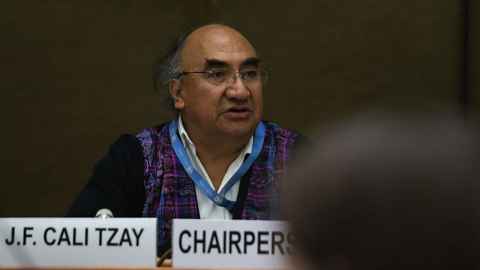
Constitutional recognition of Indigenous rights in certain countries has been pivotal in safeguarding the collective rights of Indigenous peoples, United Nations’ expert on the rights of Indigenous Peoples, José Francisco Calí Tzay, told those gathered at his sold-out Waipapa Taumata Rau, University of Auckland lecture.
The Special Rapporteur was invited to speak at Waipapa Marae as part of the 2024 Designing our Constitution conference.
A Mayan Cakchiquel from Guatemala, Calí Tzay has represented Indigenous peoples at the United Nations since the early 1980s, addressing human rights violations in Guatemala and around the world.
His public lecture, in honour of law Professor Nin Thomas, who passed in 2014, sheds light on instances where constitutional recognition has propelled the use of international human rights instruments, such as the UN Declaration on the Rights of Indigenous Peoples.
In his speech Calí Tzay shares examples of constitutional courts that have successfully advanced Indigenous rights, such as the Constitutional Court of Canada and the Colombian Constitutional Court.
He says Ecuador stands out as a country that robustly protects the cultural rights of Indigenous Peoples, with the Indigenous worldview being an integral part of the Ecuadorian constitution itself.
“For instance, Sumak Kawsay, or good living—a concept rooted in Indigenous philosophy—is enshrined within Ecuador’s constitution,” he said. “It defines critical areas such as water and food, culture and science, education, habitat and housing, health and work, the rights of communities, peoples, and nationalities, the rights of nature, the economy, and social participation and control.
“Moreover, according to Indigenous cosmology, Pachamama is regarded as a living being, and the Constitution of Ecuador duly recognises Pachamama as a subject of rights.”
The UN Special Rapporteur’s sold-out speech marked the culmination of two days of intensive workshops and discussions at the University. These sessions brought together thought leaders from across the country, fostering a rich exchange of ideas around the practical steps that can be taken to design an inclusive constitution for Aotearoa based on te Tiriti o Waitangi.
Watch the Special Rapporteur on the rights of Indigenous Peoples' speech: Constitutional reform and the importance of harmonization with international treaties: cases of successes and reforms on Indigenous Peoples.
Te Pāti Māori visits Queensland to strengthen ties with Māori in Australia
Share this article
Te Pāti Māori co-leader Rawiri Waititi.
Te Pāti Māori co-leader Rawiri Waititi, Tā,ami Makaurau MP Takutai Tarsh Kemp, will travel to the Gold Coast tomorrow to strengthen ties with Māori in Australia.
The visit, in the lead-up to the 9th Australian National Kapa haka Festival, will be an opportunity for the MPs and the Party to build on connections with whānau Māori in Australia as well as the Aboriginal and Torres Strait Islander people.
Their programme includes engagements with performing kapa haka, their whānau and communities. MP’s will also be the masters of ceremony at the kapa haka event which determines which groups from Australia qualify for Te Matatini 2025.
They will also include a meeting with independent indigenous Senator for Victoria, Lidia Thorpe, on Thursday, April 18.
“There are over 180,000 Māori living in Australia, according to the last census,” Waititi said.

“It is important that we build connections with them and their whānau, as part of our role to represent their interests.”
New Zealanders overseas who want to vote in an election must cast a special vote.
“Our visit will focus on creating awareness of the issues grappling our people in Aotearoa, what their specific aspirations and challenges are and why it is important that they enrol and participate in elections,” Waititi said.
“I also want to create some awareness around our indigenous responsibilities when living abroad. The Aboriginal and Torres Strait Islander people are the oldest indigenous culture on this planet.
“As manuhiri to this sacred whenua, it is important that Māori understand their responsibilities as manuhiri but also their accountability to the whenua and the Aboriginal and Torres Strait peoples of Australia.”

Waititi said hooking up with Lidia Thorpe will be a highlight.
“We are really looking forward to creating ties with indigenous counterparts including Senator Thorpe who shares very similar values and approaches to the representation of indigenous Australians, as we do in Aotearoa.” Said co-leader, Rawiri Waititi.
The pōhiri for the Kapa Haka Festival will take place on Friday with the competition starting on Saturday.

Latest from Kahu

'So little respect': Vandals attack, damage Hawke's Bay war memorial
The RSA is reeling from a 'senseless act of vandalism'.

5000 homes, new town hub, schools: Beachlands South rezoning approved

'It's like going to church': The spiritual journey of tā moko

'Am I Māori enough?'

Kids missing school to feed families

Quality worth making room for
Luxon puts his money where his mouth is with Southeast Asia visit

Share this:
- Click to share on Facebook (Opens in new window)
- Click to share on LinkedIn (Opens in new window)
- Click to share on X (Opens in new window)
- Click to print (Opens in new window)
- Click to email a link to a friend (Opens in new window)

The Prime Minister is putting his money where his mouth is with his first round of bilateral visits to Southeast Asia – an area of growing importance as the Government diversifies its trade ties, and attempts to navigate rising geostrategic tensions in the region.
Christopher Luxon, with a business delegation, will visit Singapore, Thailand and the Philippines, during the week-long trip.
Luxon told Newsroom he wanted to increase the intensity of the relationship with Southeast Asia, both economically and in terms of security.
Diplomatic speed dating first step in re-engagement with Southeast Asia
Aukus hits headwinds as nz mulls involvement.
“I want to see a reprioritisation and a much bigger deepening and strengthening of the relationships across the whole of Southeast Asia,” he said.
The Government had set itself an ambitious target to double the value of the country’s exports in the next decade. And that meant looking to young, growing economies in the region.
Collectively, it was New Zealand’s third largest export market, worth $9.65 billion in 2022, up 28 percent from pre-Covid levels.
Member countries were included in a range of New Zealand’s trade agreements, including the Comprehensive and Progressive Agreement for Trans-Pacific Partnership and the Regional Comprehensive Economic Partnership.
At the same time, Trade Minister Todd McClay would be visiting China – making him the first from this Government to do so.
While China’s economic growth was slowing, it remained an important trade destination, McClay said. “But look, they’ve still got 4.5 percent growth in GDP this year and next year, and for many countries in the world, that’s something that they would like.”
Meanwhile, the bloc of Southeast Asian countries was on the frontline of rising tensions, thanks to China’s increasingly assertive stance, particularly in the South China Sea and Taiwan Strait.
And the trip comes as speculation increased around New Zealand joining Aukus Pillar Two – a move that had been seen by many as a move to counter China’s growing influence in the region.
Singapore Love-in
Luxon said it was deliberate that his first bilateral visit as Prime Minister, after Australia, was to Singapore.
“It is our highest priority in the Southeast Asian region.”
Those watching the trip, should expect the first leg to be somewhat of a love-in.
Luxon was on-record as a fervent supporter of what the city-state, and its current leader Lee Hsien Loong, had achieved.
“I’ve been a big admirer of him and his 20-year legacy and the role of what he’s brought to Singapore.”
Singapore – viewed as the springboard to the region – had a strong record of embracing knowledge-based industries and high-value products and services, Luxon said, adding that it also had an “outstanding” education system, effective public service delivery, and infrastructure master planning.
“Those are things that I’ve studied for a long time out of Singapore that I think have a lot of relevance for New Zealand.”
Luxon might also exchange notes with Lee on how the two countries were managing their China relationships. In both cases, they had strong trade ties with China, but security ties with Western countries, like the US. Both New Zealand and Singapore were part of the Five Power Defence Arrangement.
“There’s no doubt about it. We’re both small countries that are navigating increasing geopolitical tensions in the Indo Pacific region in general,” he said.
This would be Luxon’s third time meeting Lee, which spoke to the strong bond between the two countries, as well the Prime Minister’s personal interest in Singapore.
Luxon would also be getting time with Lee’s successor, Lawrence Wong.
Wong currently holds the position of Deputy Prime Minister and has been picked to succeed Lee when the country elections are held later this year.
It would be important for the strong leader-to-leader relationship to continue under Wong, and Luxon said he was confident it would. In fact, he’d already met the soon-to-be leader for a few hours in the past.
Ultimately, Luxon saw this visit as an opportunity to figure out his Government’s shared work plan with Singapore, now the relationship had been cemented.
Prime Manager meets Salesman-in-Chief
Luxon’s trip to Thailand would be the first time a New Zealand leader has been to the kingdom since the 2014 military coup.
As one of the world’s top 25 economies, and a partner for almost 70 years, Luxon said he saw it as a priority visit.
Thailand was a manufacturing powerhouse, and Bangkok had overtaken Paris as the world’s most visited city, receiving 17.6 million tourists in 2023.

The Prime Minister also had common ground with newly minted Thai Prime Minister Srettha Thavisin, which would help the pair when they met for the second time.
The 61-year-old worked at Proctor & Gamble while Luxon was at Unilever, before he went on to become president of his family’s property development company, Sansiri.
While Luxon had gotten a name as the country’s Prime Manager, Thavisin had been positioning himself as Thailand’s Salesman-in-Chief, since taking the helm last August.
Thavisin was also the country’s first Prime Minister in nearly a decade without a military background.
A chance to re-assert values
The final leg of this week’s trip will take the Prime Minister to the Philippines.
In a briefing from last year, foreign officials laid out a suggested schedule of visits for the Prime Minister and Foreign Minister for 2024 and 2025.
Of the six nations New Zealand needed to prioritise for prime ministerial visits, officials suggested Thailand, Singapore and Indonesia for 2024, followed by Philippines, Vietnam and Malaysia in 2025. Obviously, Luxon has decided to swap Indonesia and Philippines in that suggested programme.
The last time a Prime Minister visited the Philippines on a bilateral visit – as opposed to a visit as part of a regional summit – was Helen Clark in 2006.
The lack of recent engagement was also linked to the problematic human rights record of former President Rodrigo Duterte.
Like Thailand and New Zealand, the Philippines has a new leader: President Ferdinand “Bongbong” Marcos.
It was one of the fastest growing economies in the region and expected to be a top-20 global economy by 2050. It is seen as a sleeping giant with untapped opportunities in renewables and manufacturing.
Luxon said the Philippines was important to New Zealand, with 100,000 Filipinos in New Zealand, making it the fastest growing diaspora community in the country.
“ We also do want to encourage the countries to resolve the tensions diplomatically because we do want to have peace and stability in the Indo Pacific region – in the South China Sea, particularly.” Christopher Luxon
The trip to the Philippines would give Luxon an opportunity to reassert New Zealand’s long held stance on disputes in the South China Sea.
Recent aggressions by China had seen tensions rise further, and the Philippines had been an outlier in the Southeast Asia bloc for its assertive stance against the superpower.
“I think it’s just about reaffirming our position … New Zealand actually hasn’t taken a position on the various individual claims, but what we have said is that we do call on all the claimants to adhere to international law, and I think that’s the right position to be in,” Luxon said.
“We also do want to encourage the countries to resolve the tensions diplomatically because we do want to have peace and stability in the Indo Pacific region – in the South China Sea, particularly.”
More New Zealand, please
Newsroom understands that behind closed doors, Asean leaders have been asking New Zealand to play a bigger – more proportionate – role in the region.
And Luxon was answering the call.
This trip comes hot on the heels of a 48-hour flying visit to meet ASEAN leaders at a summit in Melbourne in March. That was his first opportunity to engage in diplomacy with a range of Asian leaders. Now, Luxon is following up on those conversations with the bilateral visits.
In December, the Foreign Ministry brought a briefing paper to the Government that stressed New Zealand’s engagement with the growing region had fallen off the pace.
The paper emphasised the importance of Southeast Asia, adding that decades of stability in the region were under pressure.
The briefing noted that showing up to Asean meetings was “essential, but not sufficient”.
David Capie, the director of the Centre for Strategic Studies at Victoria University, said the region was important for security, diplomatic and economic reasons.
Strategic competition was playing out intensively in the region, while these countries were also facing non-traditional security threats like violent extremism, drug trafficking and irregular migration.
The Asean nations also played an important gatekeeper role.
They helped set the agenda for conversations about economic and security cooperation. These structures gave New Zealand an important seat at the table, which it might not have otherwise had.
Capie said it was easy to talk a big game, but it was harder to put the time and resources behind these types of visits when Prime Ministers had so many other demands on their time.
“I hate to sound like a cheerleader. But I’m genuinely really, really impressed and pleased to see this visit going ahead as it is.”
High-profile delegation
The economic opportunities would be highlighted by the business leaders joining Luxon on the trip.
“It almost feels like a New Zealand Prime Minister can’t leave the country these days without taking a business delegation,” Capie said.
This group had a wide range of big and small businesses. There were goods companies like Fonterra and Comvita; tourism companies like Air NZ, Auckland Airport and Sudima Hotels; Education providers including Massey University and AcademyEx; and businesses focused on the green economy like low-carbon concrete company Neocrete, sustainability certifier Carbon Click, and green hydrogen company Hiringa Energy.
The high-profile nature of the delegation was also noteworthy, with well-known chief executives and chairs travelling alongside the Prime Minister, including Air NZ chair Dame Therese Walsh, Fonterra chief executive Miles Hurrell and Massey University Vice-Chancellor Jan Thomas.
There would be a range of announcements and commitments made during the week-long programme.
Luxon said there were collaboration opportunities in the green economy.
“We have a very strong goods focus, which we’ll continue to have and there’s actually still lots of opportunities for us in the goods space … but ultimately, I do want New Zealand to be more embracing of science, technology and innovation.”
He’d even decided to take his Climate Change Minister Simon Watts, with National’s Filipino caucus member Paulo Garcia.
Watts said climate innovation remained a strategic priority.
“Through our delegates, we want to exchange ideas on innovative technology and highlight our ample capacity for renewable energy, which can address needs in Singapore, Thailand, and the Philippines.”
The Prime Minister and his delegation flew out of Auckland on Sunday morning, on the Air Force 757 , due to return to New Zealand on Saturday, April 20.
Leave a comment
Join the Conversation Subscribe to Newsroom Pro to unlock commenting on articles. Start your 14-day free trial now or sign in . Please note: All commenters must display their full name to have comments approved. Click here for our full community rules.

Start your day with a curation of our top stories in your inbox.
We've recently sent you an authentication link. Please, check your inbox!
Sign in with a password below, or sign in using your email .
Get a code sent to your email to sign in, or sign in using a password .
Enter the code you received via email to sign in, or sign in using a password .
Subscribe to our newsletters:
- 8 Things daily newsletter (premium)
- Breaking news alerts (premium)
Sign in with your email
Lost your password?
Try a different email
Send another code
Sign in with a password
I agree to Newsroom's Terms and Conditions
Advertisement
Supported by
Fjords, Pharaohs or Koalas? Time to Plan for Your Next Eclipse.
If you can’t get enough of totality, or missed out this time, you’ll have three more chances in the next four years in destinations like Iceland, Spain, Egypt and Australia.
- Share full article

By Danielle Dowling
Are you still a little giddy from the magical moments of totality during Monday’s solar eclipse? Or did clouds swoop in to block your view? Maybe you just couldn’t make it to the path of totality this time. No matter what, the question now is “ Where and when will it happen again?”
“People who have never seen it before, the first words out of their mouth after the totality ends is ‘I’ve got to see another one, this is incredible, this is unbelievable.’ That is when you become addicted to these things and end up traveling no matter where the next one is,” said Joseph Rao, an eclipse chaser and guest lecturer at the Hayden Planetarium.
So, if like Mr. Rao, you’ve developed a raging case of umbraphilia — the love of eclipses — you’ll have three chances over the next four years to see the moon blot out the sun. The first, on Aug. 12, 2026, will start above Greenland, then strafe the west coast of Iceland and move along the Atlantic Ocean and over Spain. Almost a year later, on Aug. 2, 2027, another will skirt the Mediterranean coast of North Africa then cross Egypt and part of the Arabian Peninsula. The third, on July 22, 2028, will cut across Australia and the southern tip of New Zealand.
Future Eclipses
Eclipse chasers will have several more chances this decade to view a total solar eclipse .

Last week, as Victoria Sahami , the owner of Sirius Travel , was preparing to guide a group of tourists in Mazatlán, Mexico, for Monday’s big event, she was also planning for these other upcoming eclipses. Ms. Sahami joined the ranks of the eclipse-obsessed when she witnessed one in Venezuela in the 1990s. “Like many people, I was hooked. There was no going back,” she said.
Total solar eclipses happen fairly regularly — about every one to two years — in locations scattered around the world. “That’s the great thing about them: You wind up in places that you don’t normally go,” Ms. Sahami said.
A major spoiler is weather, which will be a big variable in the 2026 eclipse — one Greenland, Iceland and Spain will see.
“Iceland normally has a lot of cloud during that time of year,” said Paul Maley , who runs Ring of Fire Expeditions . “The data shows Spain to have the higher good-weather prospects of all three. However, the sun is low in the sky and the eclipse ends as the sun hits the horizon at sunset.”
Because of Iceland’s mercurial meteorology, Ring of Fire Expeditions is going all in on Spain, with a 10-day excursion on the mainland. Sirius Travel is offering not only a five-day trip to Majorca but also an eight-day tour around Iceland. It will be based in Reykjavik, and the itinerary will remain flexible on the day of the eclipse so the tour can easily pivot toward the location with the least cloud cover. Ms. Sahami recommends the trip for those who already have a few eclipses under their belt and would be happy just to take in the sights of Iceland if the weather doesn’t cooperate.
The 2027 eclipse, on the other hand, promises to be truly stellar: Luxor, Egypt — the site of numerous ancient temples as well as the Valleys of the Kings and Queens — sits right in the middle of the path of totality and will be bathed in darkness for a full 6 minutes 23 seconds. Weather-wise, it is what Ms. Sahami called “a slam dunk.” “You know you’re going to see it. You know that you’re not going to get any clouds,” she said.
But for all its potential, those considering Egypt should be aware that the State Department has a Level 3 “Reconsider Travel” warning for the country because of the risk of terrorism.
The 2028 eclipse will darken the skies over Sydney, Australia, for 3 minutes 49 seconds. It will be the first time the city has experienced a total solar eclipse since 1857. Ms. Sahami has her eyes on a trip based out of there, while Mr. Maley has chartered a cruise ship off the northwest coast of Australia. It will be winter there, he said, but that isn’t likely to mean bad eclipse-viewing weather.
If you want to see any (or all) of these eclipses, you should get started on planning and booking now, particularly if you want to sign up for a trip organized by a tour company. One of Sirius Travel’s excursions to Luxor is already full.
Scrutinize refund policies and look into insuring your trip. Several companies will fully refund your deposit if you cancel a year in advance. A lot can happen, Ms. Sahami said, “but if you think you’re going to go, why not?”
Follow New York Times Travel on Instagram and sign up for our weekly Travel Dispatch newsletter to get expert tips on traveling smarter and inspiration for your next vacation. Dreaming up a future getaway or just armchair traveling? Check out our 52 Places to Go in 2024 .

IMAGES
COMMENTS
Preserving Maori culture is essential, as it forms an integral part of New Zealand's identity. Visiting Marae allows tourists and locals to explore traditions, customs, language, art, music and dance that are so important to the tribe. It promotes inclusion and mutual respect in contemporary Aotearoa.
The marae atea is the open meeting area in front of the wharenui, which in contemporary times, is a place where tikanga Māori ( customs and protocols) are accorded their ultimate expression. This space - the marae atea - is the domain of Tūmatauenga (the Atua/Deity of 'man' and war), for this tends to be where the welcome ceremony, or ...
Marae (meeting grounds) are the focal point of Māori communities throughout Aotearoa, New Zealand. A marae is a fenced-in complex of carved buildings and grounds that belongs to a particular iwi (tribe), hapū (sub-tribe) or whānau (family). Māori see their marae as their tūrangawaewae - their place to stand and belong.
A Quick Guide to Visiting a Marae. New Zealand's Maori culture is yet another draw-card to this unique country. As the first settlers in New Zealand more than a thousand years ago, the Maori are described as New Zealand's indigenous people.A great way to immerse yourself in the culture is by visiting one of the many maraes in the country.
Marae. A Māori community's hub is its marae, where Māori retain their tribal history and stories, genealogy, customs and traditions. These days some marae are also based in non-traditional settings such as hospitals, schools and universities. Even Auckland International Airport has a marae!
The process. When you first stand at the entrance way or gate you will be facing a building called the wharenui (meeting house) and the local people (tangata whenua) will call to your group (karanga) to come on to their marae and into the meeting house. If possible, a Māori woman (kaikaranga) will lead you on to the grounds and respond to the ...
Marae are a key feature of Māori society. The marae is a place where the Māori language can be spoken, where customs can be explored and debated, and where important ceremonies, such as welcoming visitors, meeting inter-tribal obligations, or farewelling the dead can be performed. The marae is a wāhi tapu, a 'sacred place' which carries ...
The meaning behind Te Marae. All people live in Te Ao Marama, the world of light, created when our ancestral parents, Ranginui and Papatūānuku, were forced apart. The floor of Te Marae can be seen as Papa, the Earth mother, with Rangi, the sky father, above. Our wharenui can be seen as Tāne, the son who forced his parents apart, thereby ...
Acquiring the site. Nga Hau E Wha National Marae is situated on approximately 14 acres of land located in the eastern suburbs of Christchurch. It is the largest National Marae in New Zealand. In 1848, members of Ngäi Tahu sold most of Canterbury to the New Zealand Company for 2,000 pounds and promises of reserves for present and future needs.
Welcome at Waiwhetū marae. The pōwhiri (or pōhiri) is a process whereby the host people welcome visitors on the marae. In recent years the pōwhiri process has also been used in other situations, such as welcoming a new employee to a workplace. The marae usually consists of a wharenui (meeting house) with marae ātea (courtyard) in front, a ...
Marae Group Visits Huria Marae offers a cultural learning experience for all ages and all groups of people. Your visit will often include a pōhiri (private ... Email: [email protected] . Phone: (07) 578 7838. Contact Us. [email protected] (07) 5787838; Marae Enquiries. [email protected]; Our Services.
4. Marae: The Heart of Maori Communities. The marae is the traditional meeting ground and focal point of Maori communities. It's where rituals, ceremonies, and important gatherings occur. Learn about the layout of a marae, the significance of the wharenui (meeting house), and the customs observed during marae visits. 5. Haka: The Powerful War ...
Located on Auckland's North Shore, Awataha is a cultural venue advocating the bridging of cultures, offering a range of services to unify the community. For conferences, special occasions, celebrations, performances and authentic food. School programmes, cultural package, adult education and te reo Māori.
During the pōwhiri. You should not just walk onto a marae; you need to be welcomed on. Women walk on as a group, while men also group together. Do not eat or drink during the welcome. Do not walk in front of a speaker on the marae ātea. Speak in Māori, not English, if giving a speech (unless expressly allowed).
Unique to the Māori cultural experience is the marae, a communal and sacred meeting ground that provides everything from eating and sleeping space to religious and educational facilities. In pre-colonial times, the marae was central to everyday life in Aotearoa ( New Zealand ). It was where tribal societies gathered to eat and sleep, all under ...
Marae buildings. The marae is the hub of a Māori community, the place where people gather in times of joy and celebration, and times of stress and sadness. It generally has a wharenui (meeting house), a wharekai (dining room with attached kitchen) and a shower and toilet block. In older marae this is often a building separate from the others.
Visit New Zealand Māori and Experience Their Marae With Windstar Cruises. New Zealand's Māori culture is rich with indigenous traditions, and the marae is at the heart of their community. A marae is a sanctuary for the tangata whenua. These locations allow them to continue living their way of life, from the intricately detailed carvings on ...
A marae has many functions and meanings within Māori culture. Hui (meetings), celebrations, funerals and other important cultural events take place at the marae. Marae can house health and family services, educational workshops and host educational visits. Some marae also include housing for kaumātua (elders).
Some marae etiquette that you will need to know for your marae stay includes: It is usual to give a koha (gift, usually of money) to the people of the marae. This is additional to any fees charged for hui, for example. The koha is usually presented in an envelope. You must remove your shoes before entering the wharenui.
Māori culture is an integral part of life in Aotearoa, New Zealand. For millennia, Māori have been the tangata whenua, the indigenous people of Aotearoa. Arriving here from the Polynesian homeland of Hawaiki over 1,000 years ago, the great explorer Kupe, was the first Māori to reach these lands.
Filmed at Kauwhata Marae in the Manawatu, The Beginner's Guide to Visiting the Marae is a straightforward and respectful explanation of basic marae protocol, from the wero, to the karanga, pōwhiri, whaikōrero, waiata, koha and the hongi. The programme was made in 1984 when Pākehā were generally less familiar with visiting marae, so host Ian Johnstone presents the documentary from the ...
Just like the recession in 2008-2009, Tourism in NZ will feel the long-term effects of the Coronavirus. However domestically we can be strong, until the international market returns. We have Marae that we can market and promote domestically whilst connecting to global communities as well. In western terms, Marae has no comparison.
The Special Rapporteur was invited to speak at Waipapa Marae as part of the 2024 Designing our Constitution conference. A Mayan Cakchiquel from Guatemala, Calí Tzay has represented Indigenous peoples at the United Nations since the early 1980s, addressing human rights violations in Guatemala and around the world.
Te Pāti Māori co-leader Rawiri Waititi. Te Pāti Māori co-leader Rawiri Waititi, Tā,ami Makaurau MP Takutai Tarsh Kemp, will travel to the Gold Coast tomorrow to strengthen ties with Māori in ...
The Prime Minister is putting his money where his mouth is with his first round of bilateral visits to Southeast Asia - an area of growing importance as the Government diversifies its trade ties, and attempts to navigate rising geostrategic tensions in the region. ... Collectively, it was New Zealand's third largest export market, worth $9. ...
The third, on July 22, 2028, will cut across Australia and the southern tip of New Zealand. Future Eclipses. Eclipse chasers will have several more chances this decade to view a total solar eclipse.